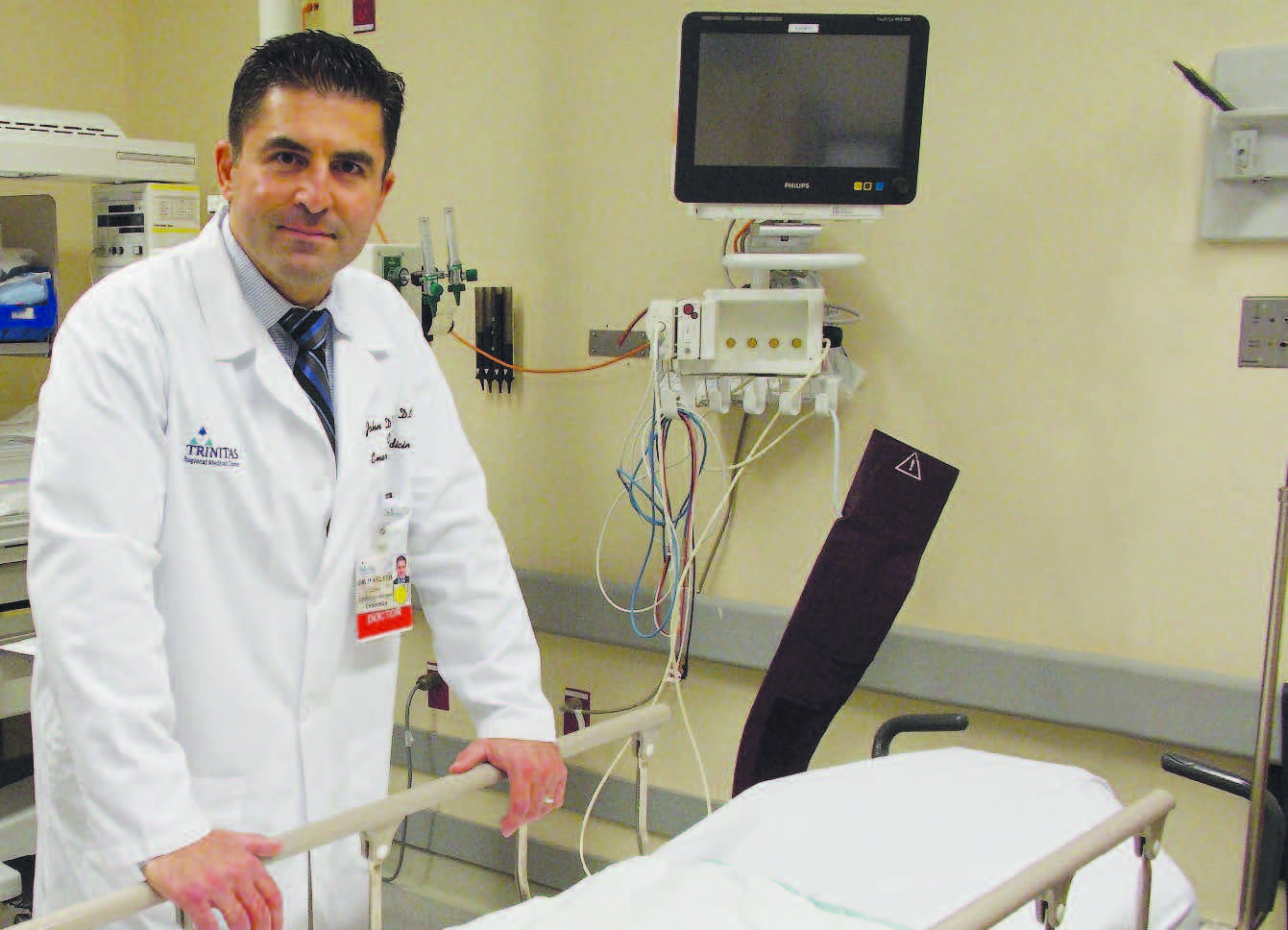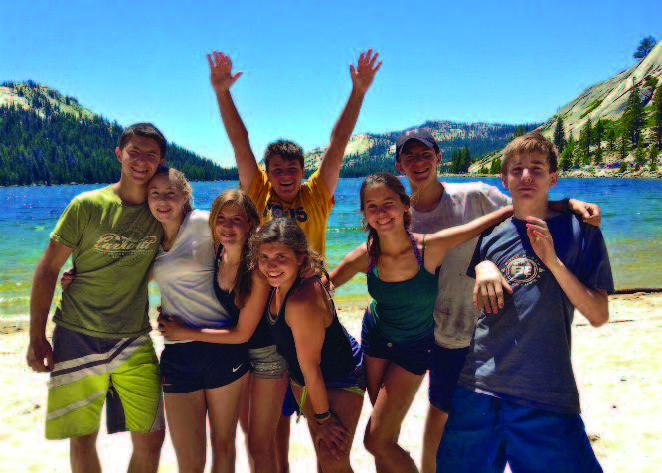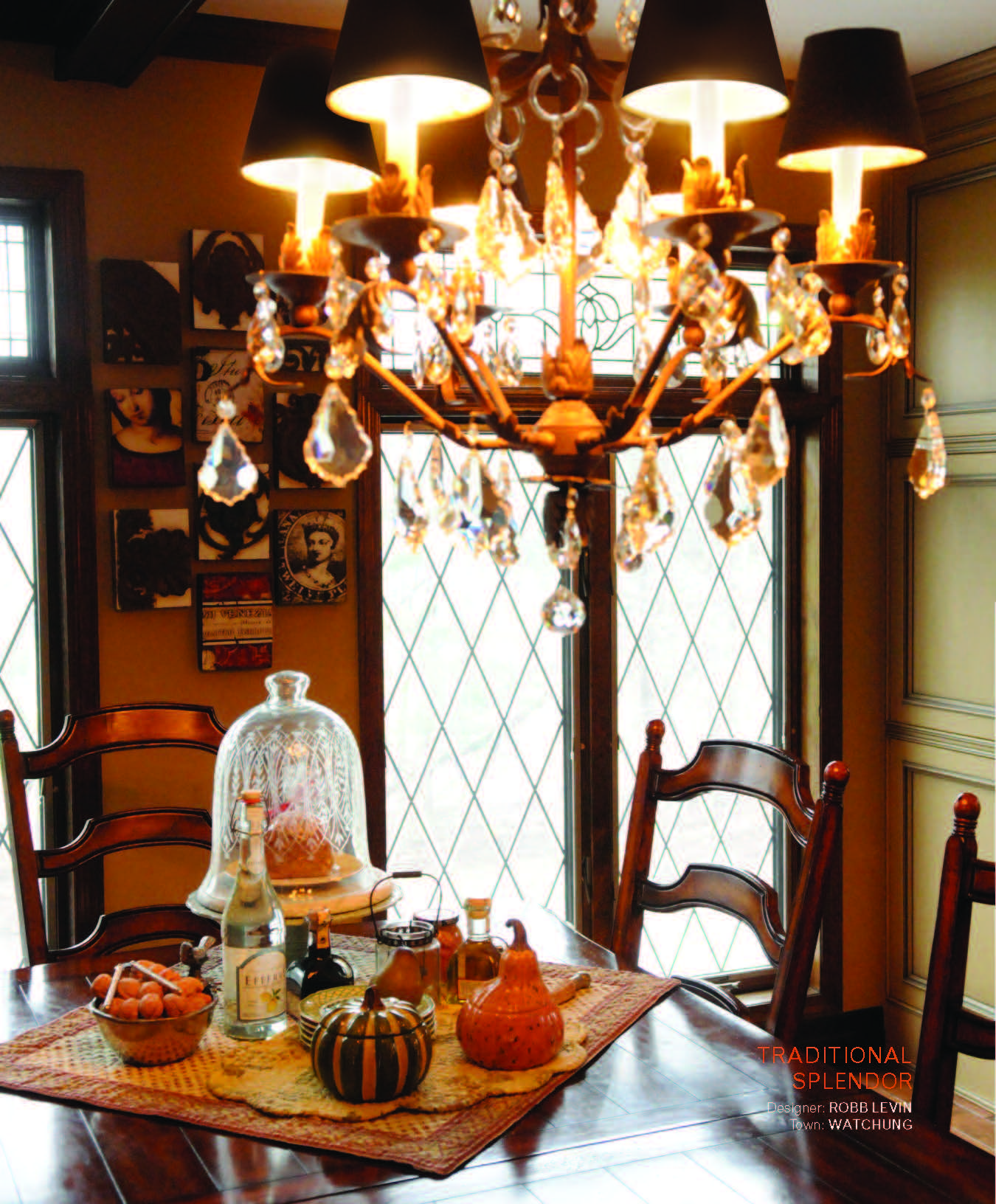



UCPAC is a blast from the past.
By Mark Stewart
The year was 1928. Nearly 1,500 people settled into their seats on a Tuesday evening to hear the first notes played by the great Chet Kingsbury on central New Jersey’s newest entertainment attraction, a $20,000 Wurlitzer pipe organ. Above the audience sparkled a magnificent, 13-foot tiered-crystal chandelier. Before them was a full orchestra pit, its musicians ready to accompany the two films scheduled to play, one starring Dolores Costello and Conrad Nagel, the other Myrna Loy. It was opening night of the million-dollar Rahway Theatre.
Later that evening, as patrons exited the building under the 2,500-light marquee, it was difficult to imagine the fun would ever end. The Rahway Theatre was a state-of-the-art entertainment palace built at the height of the Roaring ’Twenties. It could accommodate moving pictures, vaudeville revues, stage plays and concerts. No expense was spared. It even had a nursery to look after children while their parents were enjoying a show.

Upper Case Editorial Services
And yet, there were changes in the wind. The stock market crashed, movie studios started turning out talking pictures and vaudeville died. The Rahway Theatre soldiered on, providing an inexpensive diversion during the Depression and World War II. It hosted rock n roll shows in the 1950s and continued to thrive as a movie house well into the 1960s. Little by little, however, the venue lost its glittering opulence and fell into disrepair. By the 1980s it was in danger of falling to the wrecking ball.
In 1984, title to the Rahway Theatre was transferred to Rahway Landmarks, Inc. A major restoration effort was initiated and one year later it was renamed the Union County Arts Center. First the interior was restored. Next the façade underwent a facelift. As the theatre regained its footing, the city’s Arts District grew up around it. Now called the Union County Performing Arts Center, the theatre is actually one of three performance venues under the UCPAC umbrella—including the 60-seat blackbox-style Loft and the plush 199-seat Hamilton Stage down the street.
“This theatre has served as a community cornerstone for nearly nine decades,” says UCPAC executive director Lawrence McCullough. “Our mission is to present programming that is diverse and accessible and fosters the new generation of young artists and audiences.”
First-time visitors to the old building today have the same reaction as audiences did back in the 1920s: a sense of wonder and awe at its golden-age grandeur. And yes, the old Wurlitzer is still there. It sounds better than ever.
Editor’s Note: For a schedule of upcoming events at all three performing arts center venues, log onto ucpac.org or call (732) 499-8226.
EDGE takes you inside the area’s most creative kitchens.
 The Office Beer Bar & Grill • Truffled Tots
The Office Beer Bar & Grill • Truffled Tots
728 Thompson Ave. • BRIDGEWATER 32–34 Chestnut St. • RIDGEWOOD 1–7 South Ave. • CRANFORD 61 Union Pl. • SUMMIT
619 Bloomfield Ave. • MONTCLAIR 411 North Ave. West • WESTFIELD
Not your average tater tots, these are handmade tater tots infused with herbs and fried until they are crispy golden brown. They are served with white truffle aioli and sprinkled with sea salt.
 Paragon Tap & Table • Beer Brined Pork Chop
Paragon Tap & Table • Beer Brined Pork Chop
77 Central Ave. • CLARK
(732) 931-1776 • paragonnj.com
Our pork chops are brined for thee days and served on top of a creamy bacon mac and cheese. It’s one of the highlights of our gastropub menu.
— Eric B LeVine, Chef/Partner
 The Black Horse Tavern & Pub • Goffles Farm Chicken Breast
The Black Horse Tavern & Pub • Goffles Farm Chicken Breast
1 West Main Street • MENDHAM
(963) 543–7300 • blackhorsenj.com
Prosciutto wrapped Goffles Farm Chicken Breast with roasted new potatoes, marsala herb butter & crispy sage.
— Kevin Felice, 40North Executive Chef
 Piattino Neighborhood Bistro • Pan Seared Atlantic Salmon
Piattino Neighborhood Bistro • Pan Seared Atlantic Salmon
88 East Main Street • MENDHAM
(973) 543-0025 • piattinonj.com
Pan Seared Atlantic Salmon paired with a lemon herb risotto, piccata butter and crisped baby arugula.
— Kevin Felice, 40North Executive Chef
 George and Martha’s American Grille • Crispy Jumbo Lump Crab Croquettes
George and Martha’s American Grille • Crispy Jumbo Lump Crab Croquettes
67 Morris Street • MORRISTOWN
(973) 267-4700 • georgeandmarthas.com
Crispy Jumbo Lump Crab Croquettes with Lemon infused Aioli and Roasted Corn Relish.
— Kevin Felice, 40North Executive Chef
 The Office Tavern Grill • Maryland Blue Crab Dip
The Office Tavern Grill • Maryland Blue Crab Dip
3 South Street • MORRISTOWN
(973) 285-0220 • officetaverngrill.com
Maryland Blue Crab Dip Sour Dough Bread Bowl filled with Jumbo Lump Crab Dip, served with Old Bay Flour Tortilla chips.
— Kevin Felice, 40North Executive Chef
 Daimatsu • Sushi Pizza
Daimatsu • Sushi Pizza
860 Mountain Ave. • MOUNTAINSIDE
(908) 233-7888 • daimatsusushibar.com
This original dish has been our signature appetizer for over 20 years. Crispy seasoned sushi rice topped with homemade spicy mayo, marinated tuna, finely chopped onion, scallion, masago caviar, and ginger. Our customers always come back wanting more.
— Momo, Chef
 Publick House • Roasted Long Island Duck Breast
Publick House • Roasted Long Island Duck Breast
899 Mountain Ave. • MOUNTAINSIDE
(908) 233-2355 • publickhousenj.com
New to our menu this season is the roasted long island duck breast. The duck is seasoned with salt and pepper and slowly roasted to temperature. Paired with creamy, sweet celery root puree and earthy oven roasted portobello mushrooms, the balance of flavors compliments the fat of the duck breast perfectly.
— Bernie Goncalves, Owner
Morris Tap & Grill • Tuna Tartare Flat Bread
500 Route 10 West • RANDOLPH
(973) 891-1776 • morristapandgrill.com
Fresh ahi-grade tuna tossed in a light ginger scallion sauce served on top of a wasabi brushed lavash crisp.
— Eric B LeVine, Chef/Partner

Thai Amarin • Duck Rad Prig
201 Morris Ave. • SPRINGFIELD
(973) 376-6300, (973) 376-6301 • thaiamarinnj.net
A customer favorite, our crispy boneless duck topped with a sweet and spicy chili and garlic sauce is unique only to us. Topped with aromatic basil and lime leaves, our Ped Rad Prig will have you wanting more.
— Amy Thana, Owner
 Café Z • Hot “Z” Shrimp
Café Z • Hot “Z” Shrimp
2333 Morris Avenue • UNION
(908) 686-4321 • CafeZNJ.com
Jumbo shrimp encrusted with panko bread crumbs served with our hot and spicy marinara sauce that we make here.
— Patricia Inghilleri, Owner
 Chestnut Chateau • Black Seabass
Chestnut Chateau • Black Seabass
649 Chestnut Street • UNION
(908) 964-8696 • chestnutchateaunj.com
As the cold weather is in full swing, everyone bundles up and likes to stay warm. I embrace the cold and use the best fish caught in the deep blue waters of our east coast. Black seabass is great whole or filleted. The flaky white meat is served with a browned butter sauce that’s garnished with capers, baby croutons, parsley and lemon supremes.
— George Niotis, Chef
 Mario’s Tutto Bene • Vinegar Pork Chops
Mario’s Tutto Bene • Vinegar Pork Chops
495 Chestnut Street • UNION
(908) 687-3250 • mariostuttobene.com
Our vinegar pork chops feature three thin-cut Frenched chops that are coated with Italian breadcrumbs and sautéed with sweet vinegar peppers, prosciutto and garlic. They arrive with house-made roasted or mashed potatoes. Our regulars love this entrée.
— John Garofalo, Owner
 The Manor • Surf and Turf
The Manor • Surf and Turf
111 Prospect Avenue • WEST ORANGE
(973) 731-2360 • themanorrestaurant.com
I pair pan-seared prime filet mignon with a butter-braised lobster, along with fresh seasonal vegetable accents. An airy shellfish emulsion and the creamiest mashed potatoes you will ever taste make for the perfect partners to this classic dish, which has helped The Manor successfully define the art of fine dining for over a half-century.
— Mario Russo, Chef de Cuisine
EDGE is not responsible for any typos, misprints or information in regard to these listings. All information was supplied by the restaurants that participated and any questions or concerns should be directed to them.
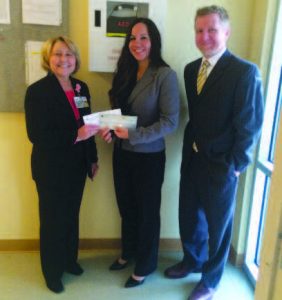 BANKING ON THE VALUE OF PARTNERSHIPS
BANKING ON THE VALUE OF PARTNERSHIPS
Carmen Rivera, Branch Manager of Investors Bank in Elizabeth,(center) presented a $5,000 check to Nadine Brechner, Chief Development Officer and Vice President, Trinitas Health Foundation. As the first of three installments, the bank’s grant will assist with the purchase of a CT scan for the Emergency Department. At right is Jamie Rudolph who recently joined the Trinitas Health Foundation as its Director of Corporate Partnerships. He brings to the Foundation fundraising experience with an emphasis on creating successful public and private partnerships.
Interested in joining Investors Bank as a partner with the Trinitas Health Foundation? Contact Jamie at jrudolph@trinitas.org or (908) 994-8423.
 BIG BOYS DON’T CRY
BIG BOYS DON’T CRY
The 2014 football season was painful for New York’s Giants and Jets. But, when you are a die-hard fan, a Tailgate party can help to heal your wounds.
With that in mind, the Trinitas Health Foundation put on its helmet and shoulder pads and hosted its first-ever “Tailgate with Trinitas” in December where fans enjoyed one of the Giants’ only victories of the season as they faced the Tennessee Titans. Former Giants greats mingled with guests and shared stories about their time in the NFL. All five players spent most of their careers with the New York Giants and have an impressive seven Super Bowl rings between them. In the Tailgate huddle with Nadine Brechner, Vice President, Trinitas Health Foundation and Chief Development Officer, and Gary Horan, President and CEO, (center) were Giants greats Bill Neill, Bart Oates, Stephen Baker, Billy Ard, Perry Williams.
GRANT PLANTS SEEDS FOR THE GARDEN AND TOOLS FOR THE KITCHEN
Young people at the Trinitas Residential Treatment Center at the New Point campus are thanking their lucky stars. Thanks to a generous grant from Starlight Children’s Foundation® NY•NJ•CT, the teens and tweens will be able to grow their own fruits and vegetables. And they’ll have new kitchen appliances so they can experiment with new dishes.
A successful grant submission from the Trinitas Health Foundation resulted in nearly $7750 from Starlight NY•NJ•CT for the Center’s Culinary Arts Program. The young residents will gain experience in gardening by cultivating fruits and vegetables for their table. The funding for the gardening component will help purchase a greenhouse for year-round growing. Widely recognized as extremely therapeutic for many psychological and emotional disorders, gardening has increasing appeal for kids at the Center. Since 2012, many of the Center’s residents have enjoyed cooking shows on the Food Network, and Starlight’s funded enhancements will help improve engagement and personal satisfaction through the Center’s Culinary Arts program.
The new greenhouse will give them a chance to work together to cultivate and harvest what they cook for the Center’s table. And that food preparation and cooking will be done in a kitchen equipped with a new oven and a new refrigerator/freezer.
With little or no family ties, these young people benefit from being with other kids in a place where they can have positive interpersonal experiences and learn valuable life skills. Cooking and gardening fill those needs for nourishment on a variety of levels.
Submit your EDGE People event at www.edgemagonline.com
“I want to take everyone I know to this restaurant…‘This is how we should be eating!’ I want to shout.”
By Andy Clurfeld
Roosterspin Wine Bar & Eatery
251 North Avenue, Westfield. Phone: 908.233.7333
Open for lunch and dinner at 11:30 am 7 days a week: Sunday thru Thursday until 10:30 pm and Friday & Saturday until 12:30 am. For more information log onto info@roosterspin.com.
Defending Jersey’s restaurants is so 20th century, but we do it anyway. We do it because attacks are frequent and the attackers a mix of the ignorant with strong cravings for superiority and the wise who know our state’s chefs and restaurants could really, truly do much better.
This is our collective issue: the dichotomy in restaurants that brings us both brave brilliance and sorry retreads. Restaurants such as Cucharamama in Hoboken, A Toute Heure in Crefending Jersey’s restaurants is so 20th century, but we do it anyway. We do it because attacks areanford, Drew’s Bayshore Bistro in Keyport, and Zeppoli in Collingswood fortify our pride as we learn from, and feast on, the visions of their pioneering chefs. The same-old, same-old menus of countless copycats, be they Italian or Asian, traditional American or globally influenced, do little but provide the busy or the bored a supper away from the stove.
That’s why the emergence of a restaurant with both verve and vision—and extremely delicious food—is cause for celebration. Roosterspin in Westfield, which opened last fall as the sibling of Mono + Mono in New York under the stewardship of owner Mihae Cho and chef Hyun Han, may take off from an uber-trendy genre of modern Korean restaurants with must-offer dishes, but it does it with singular style and technical prowess in the kitchen.
Roosterspin rocks.
 Often, literally. There are LPs galore as decor and a deejay at a computer taking requests. I somewhat hesitantly ask for John Coltrane and, within a minute, get a couple tracks of Coltrane. We take menus from a tuned-in server and receive a concise, but not condescending primer on how to navigate a rather novel bill of fare. We dig into a series of dishes that connect the accessible to the adventurous and fall in love with Roosterspin’s cuisine—and concept.
Often, literally. There are LPs galore as decor and a deejay at a computer taking requests. I somewhat hesitantly ask for John Coltrane and, within a minute, get a couple tracks of Coltrane. We take menus from a tuned-in server and receive a concise, but not condescending primer on how to navigate a rather novel bill of fare. We dig into a series of dishes that connect the accessible to the adventurous and fall in love with Roosterspin’s cuisine—and concept.
I want to take everyone I know to this restaurant, sitting pretty in a multilevel woody-modern/industrial-cozy space in the downtown district conveniently near the train station. “This is how we should be eating!” I want to shout. This is food we should know and food we can learn from, taking riffs from Roosterspin’s plates into our home kitchens. This isn’t rocket science, either; it’s fun eating, with some new ingredients and twists on techniques making that happen.
Take a simple dish, something as familiar as fries. Season them, give them a dipping sauce pumped with the taste of spirited kimchi, and let folks dig in to something old energized by something new. There is a drizzle of tame cheese to smooth the way, but the novice eater is already craving more.
 It is time for another small plate, which is how you can start here or dine straight through. Slurp map chae, sizzling skinny sweet potato noodles spliced with beef, wild mushrooms and shards of Asian vegetables. Bright and unexpectedly light are the seafood patties known as seafood jeon, packed with calamari, shrimp and vegetables and bound by egg. If you are looking for something hearty, snag galbi LA cut, a signature dish here, is a perfect partnership of silky short ribs with rice cakes and vegetables served with a nod to beloved Korean barbecue. Looking for light? The mango salad, flush with pretty beets and sweet potatoes and dressed with sesame, is a dandy mix of flavors that you will have a hard time separating ever again.
It is time for another small plate, which is how you can start here or dine straight through. Slurp map chae, sizzling skinny sweet potato noodles spliced with beef, wild mushrooms and shards of Asian vegetables. Bright and unexpectedly light are the seafood patties known as seafood jeon, packed with calamari, shrimp and vegetables and bound by egg. If you are looking for something hearty, snag galbi LA cut, a signature dish here, is a perfect partnership of silky short ribs with rice cakes and vegetables served with a nod to beloved Korean barbecue. Looking for light? The mango salad, flush with pretty beets and sweet potatoes and dressed with sesame, is a dandy mix of flavors that you will have a hard time separating ever again.
OK, but the real reason you come here is to find out what all the fuss is over this Korean fried chicken business. Deep-fried twice to ensure super crispy skin and a desirable burning off of the fat, this is chicken at its best. You can get it with a soy/garlic sauce or a fiery hot sauce. Request a half order with one and a half with the other. Why choose?I took it with a side of fried pickled radish and smiled as I ate.
Roosterspin’s range does not stop with the basics. It serves forth Korean rolls such as the kimchi, with shrimp, kimchi, cucumber, crab and beets given a smack of crunch, then dappled with a smoky spicy màyo. Delish. Roosterspin does sliders in rice buns that demand attention—a spicy tuna tartar with cherry tomatoes and greens and a pop of addictive Korean red pepper paste, a beef bulgogi given the crunch of pickle and the zing of wasabi, and a chop of shrimp and calamari topped with calm tartar sauce.
I do not want to lose the lingering flavors of Roosterspin’s savory fare by ordering dessert, but we need to, right? Soba noodle pudding is serviceable and the green tea mochi de rigueur. No interference, thankfully.
You can be one of the Jersey restaurant bashers, sporting a chip on your shoulder, or you can support a truly thoughtful concept and check out Roosterspin. New is nutrition for the taste buds.
SEOUL FOOD
If Roosterspin whets your appetite for more traditional and authentic Korean fare, you might want to head toward southeastern Bergen County, to Palisades Park or Fort Lee.
Over the past two decades, Palisades Park has transformed itself into New Jersey’s unofficial Koreatown. Three in five of the 20,000-or-so residents are of Asian descent, with the vast majority hailing from South Korea. In terms of density and percentage, Palisades Park is now America’s “most Korean” municipality. The most popular restaurant in Palisades Park is probably So No Nan Jip on Broad Avenue. It features authentic Korean barbecue and is usually packed—often past midnight. However, you can duck into almost any eatery along the town’s main drag and find an authentic Korean meal.
 Palisades Park’s next-door neighbor, Fort Lee, also boasts a large Korean population, as well as a robust commercial section featuring Korean shops and restaurants, which stretches from just south of the George Washington Bridge north to Englewood Cliffs. Two of the best are Gammeeok on Main Street and Dong Bang Grill on Palisade Avenue. Besides traditional Korean fare, Dong Bang Grill also does a brisk business at the sushi bar—which is saying something, considering the number of excellent Japanese restaurants in Fort Lee.
Palisades Park’s next-door neighbor, Fort Lee, also boasts a large Korean population, as well as a robust commercial section featuring Korean shops and restaurants, which stretches from just south of the George Washington Bridge north to Englewood Cliffs. Two of the best are Gammeeok on Main Street and Dong Bang Grill on Palisade Avenue. Besides traditional Korean fare, Dong Bang Grill also does a brisk business at the sushi bar—which is saying something, considering the number of excellent Japanese restaurants in Fort Lee.
Editor’s Note: Andy Clurfeld is a former editor of Zagat New Jersey. The longtime food critic for the Asbury Park Press also has been published in Gourmet, Saveur and Town & Country, and on epicurious.com. Her post-Sandy stories for NBCNewYork.com rank among the finest media reporting on the superstorm’s aftermath and recovery.
Somewhat closer to home and also quite popular are Kimchi Hana, located in South Plainfield, as well as New Keum Ho Jung and Chung Sol Bat,both in Edison. —M.S.
For more and more vacationers, wellness is the issue.
By Lavinia Lee Mears
You’re going where? To do what? It was November of 2000. I had just told my (then) better half that I was departing the next day for Costa Rica to meditate on a mountaintop for a week. His reaction was, well, let’s just say he wasn’t thrilled at my spontaneous decision.
I was tired. Extremely tired. I had just come off a year of back-to-back trials as a new assistant prosecutor. Taking a few days off to rest at home had not worked for this work-a-holic who couldn’t resist picking up her phone or checking her emails. It was too early in my legal career to be a burned-out lawyer; I needed to be in a place where there were no distractions from my sole focus: rest. And so off I went to a yoga and meditation retreat, not quite knowing what to expect.
I arrived in Costa Rica and spent the next week with strangers. I meditated and practiced yoga every day. Despite being a meat-and-mashed potatoes girl, I found myself enjoying the healthy vegetarian meals. I slept like a normal human being and devoted one entire day to silence. Ten days later I returned, rested and relaxed, and had even shed those stubborn five pounds I had been trying to lose for years. I didn’t have that “need a vacation from my vacation” feeling. I looked good and I felt good. I was hooked.
That is how my love affair with the wellness vacation (aka well-cation) was born. In the ensuing decade-and-a-half, my precious time off has been devoted to vacations that nurture my mind and body. I’ve said good-bye to the gluttonous, all-inclusive resort and hello to the all-you-can eat vegetarian meal plan.
 The biggest benefit of a well-cation is the jump-start it offers toward reaching your wellness goal. Staying on-program is much easier when the stresses of everyday life are removed and only healthy activities and meals are offered. And since guests share the same outlook, they support one another to stay committed toward reaching their wellness goals. The investment in a wellness vacation continues to pay off when new habits take hold after the vacation has ended. This may explain why the number of people who are investing their time and money in wellness-related travel has been on the rise. The worldwide wellness tourism market—estimated by some at over $400 billion—has been growing steadily since 2007, increasing nearly 13 percent last year.
The biggest benefit of a well-cation is the jump-start it offers toward reaching your wellness goal. Staying on-program is much easier when the stresses of everyday life are removed and only healthy activities and meals are offered. And since guests share the same outlook, they support one another to stay committed toward reaching their wellness goals. The investment in a wellness vacation continues to pay off when new habits take hold after the vacation has ended. This may explain why the number of people who are investing their time and money in wellness-related travel has been on the rise. The worldwide wellness tourism market—estimated by some at over $400 billion—has been growing steadily since 2007, increasing nearly 13 percent last year.
Choosing the right well-cation, whether here in the U.S. or abroad, depends upon your personal wellness goals and budget. The process begins with an understanding of the different options out there…
Destination Spas
If rest and relaxation is your goal, destination spas offer guests the ultimate pampering experience, usually in a resort-like setting. Overnight accommodations, meals and access to the resort’s facilities are included in the fee. Guests are offered specific spa services geared toward rest and relaxation at an additional cost. Facials, massages, manicure/pedicure treatments and body wraps are offered in a tranquil environment. Prices range from $300 to more than a $1,000 per night.
The world-renowned Canyon Ranch in Arizona offers its 3-night “Spa Sampler” package at a cost of $3,840 per person. Guests can allocate $145 of that amount toward spa services. A less expensive local option is Deerfield Resort and Spa. Located in East Stroudsburg, Pennsylvania, Deerfield is less than a two-hour drive from most parts of New Jersey. A three-night stay costs under$900. Accommodations, meals and a 50-minute Swedish massage are included in that rate. Crystal Springs Resort in Sussex County and the Ocean Place Resort and Spa in Monmouth County, are hotels that have full-service day spas available to resort guests and day visitors. Crystal Springs offers guests 2 spas, 6 golf courses, 12 dining options, a water park and a ski resort. Neither Ocean Place nor Crystal Springs offers an all-inclusive option; rates depend on the level of accommodations chosen, as well as the time of year.
Weight Loss
If your goal in 2015 is to lose 5 to 20 pounds (or more), a weight loss retreat can jump-start you toward that goal. Guests adhere to a strict menu, which is rich in vegetables and vegetable juices. Exercise programs are geared to accommodate various fitness levels. Stays range from three days to three weeks and weight loss varies from a pound a week to a pound a day. Since food that isn’t part of the program is outlawed at the retreat as “contraband,” the temptation to cheat is removed. A weight loss retreat is a bullet-proof way to ensure immediate results. Most programs incorporate cooking, exercise and health education classes to teach guests how to stay on-program when they return home.
 There are a number of weight loss retreats in the region, including the Copperhood Retreat & Spa in the Catskills. It has been touted as one of the best in the world. The three-night detox plan costs about $1,500, while the 21-day “Break Your Bad Habits” plan rate is about $8,000, depending on what level of accommodations is chosen.
There are a number of weight loss retreats in the region, including the Copperhood Retreat & Spa in the Catskills. It has been touted as one of the best in the world. The three-night detox plan costs about $1,500, while the 21-day “Break Your Bad Habits” plan rate is about $8,000, depending on what level of accommodations is chosen.
 Detoxification
Detoxification
“Detox” vacations aim to rid the body and mind of toxins and tensions. While programs vary in cost and available services, you can expect most detox programs to include:
- All-you-can-eat raw, organic vegetables and juices
- Steam rooms, hot tubs and dry sauna therapy
- At least one day devoted to a water or juice fast
- Spa services such as colon hydrotherapy, lymphatic drainage massage and detoxifying body-wraps
- Exercise and meditation classes
The Hippocrates Health Institute’s 21-day “Life Transformation Program” teaches guests how to detoxify their bodies and enlightens them to the benefits of a raw, “live-food“ vegan diet. Located in West Palm Beach, Florida, tuition for the program ranges from $7,000 to $30,000 depending on the accommodations and services provided.
 Fitness
Fitness
If you already are in great shape and want to bring your fitness to a higher level, fitness vacations (aka Boot Camps) may be the answer. As the name implies, these places are not for the faint of heart. Keeping up with the rigorous program requires stamina and excellent physical health. Your doctor’s approval is recommended, and in some cases, required. Guests commit to a demanding fitness regimen with activities and/or classes offered from dawn to dusk. Mountain climbing, hiking and surfing are among the leisure activities offered, depending on the climate and geography. Classes on nutrition and healthy eating are included in the fee, as are meals. Accommodations vary from luxurious to rustic.
One of the best known Weekend Warrior boot camps is Utah’s all-inclusive Red Mountain Resort, with rates starting at $295 a night. The resort’s “Adventure Concierge” assists guests with planning activities such as hikes to explore the red rock canyons and cliffs, scenic mountain biking and outdoor excursions such as horseback riding, kayaking and wild-mustang tours.
Yoga
Yoga ashrams offer a quiet respite from the crush of professional life, focusing on stretching, breathing and meditation. Rates can be as low as $50 a night and accommodations are often dormitory-like settings, with shared restrooms and showers. Meals are basic vegetarian and guests are required to follow the daily schedule of yoga and meditation classes, which likely start at dawn. You may also be expected to help with up-keep of the facility by gardening, cooking and assisting with cleaning up after meals—a practice called “karma yoga.” You may also have the option of learning the art of “mindfulness” by devoting one or more days to complete silence.
Needless to say, there are many resorts and holistic centers that offer the amenities and luxuries of a destination spa along with their yoga classes and meditation instruction. For instance, the Chopra Center for Wellbeing in Carlsbad, California has a six-day “Perfect Health” retreat beginning at $2,875, not including accommodations. Closer to home, the Kripalu Center for Yoga & Health in Stockbridge, Massachusetts offers retreat weekends with various self-improvement courses throughout the year starting at $375.
There are countless wellness vacations options in the United States and throughout the world. The best one will be customized to help you meet your personal wellness goals. If you know what you want and what to look for, you can also do it yourself. For help planning a wellness vacation, contact a certified wellness travel agent or an agent experienced in planning wellness vacations.
Editor’s Note: Lavinia Lee Mears is a Westifeld attorney with a passion for writing and a love of wellness vacations. A mother of two school-age boys, she has lived in Union County most of her life. In addition to her legal work, Lavinia is an advocate for gifted children with learning differences.
Problem-solving by the numbers
By Dr. Rodger Goddard
Life is a journey with constant challenges. We all face issues and problems on a daily basis. Some of us enjoy and embrace the life challenges that cross our path, while some of us fear, dislike and run from them. Some of us are invigorated and some of us are overwhelmed by our issues. It is difficult to know what makes some of us enjoy problem-solving and some of us fear problems. The 2–4–6–8 Method can help give you the power to know when and how to solve problems yourself…and, just as important, when to seek help.
The 2–4–6–8 Method holds that there are 2 approaches to solving problems, 4 types of problems, 6 ways to assess our problems and 8 basic problem-solving strategies…

www.thinkstockphotos.com
The two approaches to problem-solving involve either solving a problem yourself or getting help from someone else. People who try to solve problems on their own are sometimes successful, however, sometimes they get stuck. People who reach out to others—whether friends or professionals—often get the help and support they need to sail through the stormy waters of life. That being said, it is not always an either/or situation. It can be self-defeating to either avoid getting help from others or be overly dependent on others and not trust your own problem solving skills.
The four types of problems that you may face are:
- Work Problems, which may involve job, financial, money, coworker or boss difficulties;
- Love Problems, which may involve
- Family Problems, which may involve difficulties or conflict with parents, siblings or children;
- Internal Problems, which may involve dealing with childhood wounds, past traumas or intense inner emotions
 The six ways to assess a problem are by looking at the areas of Thought, Emotion, Action, Frequency, Duration and Intensity. Thought refers to how we think about and view our problem. Are our thoughts, for example, helping to solve our problem? Or are they self-critical, condemning or working against us and therefore exaggerating or making our problem worse? Emotion refers to the feelings that a problem brings up in us, and how we handle those feelings. Can we name what we are feeling (e.g. sad, anxious, guilty, angry, insecure, shame or rage)? Are we able to make friends with our feelings and get information from them about what we want and need? Or do we let our emotions overwhelm and injure our health? Action refers to the positive or negative behaviors that we do in response to our problem. Does our problem lead us to say bad things to people—or try to shop, drink, smoke, drug or eat our problem away? Frequency refers to how often a problem or difficulty occurs. Does it trouble us once a month, week, day, hour or minute? Duration refers to how long our problem lasts when it comes. Does it cause us to feel bad for a couple of minutes and then go away, or do we feel terrible for hours, days, weeks, months or years? Finally, Intensity refers to the degree of distress the problem causes. Does it lead us to be mildly uncomfortable and irritable, or so intensely upset that we are ready to explode?
The six ways to assess a problem are by looking at the areas of Thought, Emotion, Action, Frequency, Duration and Intensity. Thought refers to how we think about and view our problem. Are our thoughts, for example, helping to solve our problem? Or are they self-critical, condemning or working against us and therefore exaggerating or making our problem worse? Emotion refers to the feelings that a problem brings up in us, and how we handle those feelings. Can we name what we are feeling (e.g. sad, anxious, guilty, angry, insecure, shame or rage)? Are we able to make friends with our feelings and get information from them about what we want and need? Or do we let our emotions overwhelm and injure our health? Action refers to the positive or negative behaviors that we do in response to our problem. Does our problem lead us to say bad things to people—or try to shop, drink, smoke, drug or eat our problem away? Frequency refers to how often a problem or difficulty occurs. Does it trouble us once a month, week, day, hour or minute? Duration refers to how long our problem lasts when it comes. Does it cause us to feel bad for a couple of minutes and then go away, or do we feel terrible for hours, days, weeks, months or years? Finally, Intensity refers to the degree of distress the problem causes. Does it lead us to be mildly uncomfortable and irritable, or so intensely upset that we are ready to explode?
The eight problem-solving strategies in the 2–4–6–8 Method are Communication, Love, Creativity, Fight, Action, Steady Patient Work, Finding Meaning and Emotional Intelligence. To keep them straight, I find it helpful to use the metaphor of the mythical meaning of the planets in our solar system. For example, in mythology, Mercury represents Communication. Strategy #1 involves communicating with others to resolve problems.
Venus represents Love. Strategy #2 involves finding better ways to care for yourself or the people around you in order to feel better and solve your problems.
In mythology, Earth is the Goddess Gaea. Gaea represents mother, birth and Creativity. Problem-solving Strategy #3 involves being artistic, creative and using innovative thoughts to find solutions. The next planet, Mars, is the God of War. Strategy #4—a Martian strategy, as it were—involves being tough and willing to Fight against the negative thing you are facing in the world or in yourself. Jupiter (Zeus) represents power, leadership and control. Strategy #5 involves creating a plan to take charge of the issues that you face and putting that plan into Action.
 Saturn is the God of time. People who use a Saturn strategy—Strategy #6—take time to digest and respond to their problems. This involves patience, long-term planning and Steady, Patient Work over a long period of time. They know that continual small actions enable them to change a situation, whether it’s something about themselves, another person or a relationship.
Saturn is the God of time. People who use a Saturn strategy—Strategy #6—take time to digest and respond to their problems. This involves patience, long-term planning and Steady, Patient Work over a long period of time. They know that continual small actions enable them to change a situation, whether it’s something about themselves, another person or a relationship.
Uranus is the God of heavens and the night sky, and is often viewed as representing a person’s embracing their uniqueness and individuality. Strategy #7 involves Finding Meaning in the larger-life aspects of your problems, of seeing your life as a spiritual journey of discovery. Neptune, the god of the sea, represents Strategy #8, Emotional Intelligence. The turbulent sea represents emotions and everything going on beneath the surface. People who employ a Neptune strategy use their feelings and emotions to guide them. They penetrate into the underlying core meaning and essence of a problem and use their feelings to find direction and answers.
If you are someone who embraces and uses active problem-solving strategies, keep up the great work. The 2–4–6–8 Method is an important and effective thing to have in your toolbox. However, if you find yourself overwhelmed by your problems—if the frequency, duration and intensity of your problems are high, and you have trouble using effective strategies to solve your problems—then it may be time to get professional help. Professional help today involves building your problem-solving skills, so you can still use the 2–4–6–8 Method to better understand your situation and your resources for solving it.
Life is a journey of discovery and challenges on a stormy sea. The 2–4–6–8 Method can help you determine whether you can navigate these challenges on your own, or if you need help in getting to peaceful, calm waters. May the journey of your life be invigorating, fun, spiritual, challenging and fulfilling. I wish you good sailing.
 Editor’s Note: Dr. Rodger Goddard has served as the Chief Psychologist at Trinitas Regional Medical Center for over 25 years. He is the director of Wellness Management Services, which provides workshops, presentations and programs to companies and schools to improve individual and organizational success. He is also the director of the hospital’s APA-accredited psychology internship program. He can be reached at rgoddard@trinitas.org or (908) 994-7334.
Editor’s Note: Dr. Rodger Goddard has served as the Chief Psychologist at Trinitas Regional Medical Center for over 25 years. He is the director of Wellness Management Services, which provides workshops, presentations and programs to companies and schools to improve individual and organizational success. He is also the director of the hospital’s APA-accredited psychology internship program. He can be reached at rgoddard@trinitas.org or (908) 994-7334.
Yes, there is hope for your dumb home.
By Rachel Rutledge
Is there anything more flattering than the discovery that you’re being fought over? You may not realize it, but as a suburban homeowner, you are the object of intense desire on the part of a very active group of venture capitalists, who are snapping up patents for future “smart-home” products and technologies. Perhaps it is more accurate to say that they are fighting over the companies that will be fighting for your business in 2015 and beyond. The battleground? Your “dumb” home.
We’ve been hearing about smart homes for the better part of a decade. These are the fanciful dwellings that practically run themselves, or at least do our bidding with a minimal amount of hands-on technical expertise. They know when we’re home and when we’re not. They run the lights and heat for us. They brew us coffee, start the shower and warm up the car on a cold morning. They remind us of appointments or can’t-miss TV shows. They even let us know when something under the floor, behind a wall or out in the yard isn’t working quite as well as it should. Unfortunately, because most of us live in older homes or apartments, a smart home has been out of reach. It’s been too expensive or too complicated to consider.

www.thinkstockphotos.com
Well, no matter how tech-averse you may be, it may be time to reconsider.
This is where those battling venture capitalists come into play. They look into the future and see every home as a smart home. And as investors, they want a big piece of the action. They want to own the stuff that will enable you and me and the elderly couple down the street to make our homes super-smart. And the sooner that happens, the sooner the venture capital generates a return. The result has been an acceleration to near-blinding speed of the technology and products that can actually make that happen.
It’s available, it’s affordable, and it’s not all that hard to figure out.

www.thinkstockphotos.com
Opportunity Knocks
Why the sudden surge in smart-home products? The answer is the “smart phone.” The Apple iPhone and its imitators have penetrated the communications market so quickly and effectively that whoever doesn’t own one now will probably break down and buy one in the next few years. Smart phones aren’t really telephones in the traditional sense. They are small, handheld computers that link wirelessly with computer networks, enabling people to communicate by voice. What smart phones (and tablets) are really good at is functioning as remote controls and monitors for smart-home networks. In essence, most of us already own the remote control to a smart house…we just don’t have the smart house yet.
As a consequence, the competition to sell you the technology needed to make your dumb home smarter is heating up fast. If you’ve been to a Lowe’s or Home Depot lately, you may have noticed a lot of new products in this category. They are often situated in high-visibility locations.

www.thinkstockphotos.com
PICTURE THIS…
Your alarm clock wakes you up…it turns on the shower to exactly the right temperature…your flat screen clicks on to your go-to morning show…your cell phone gives you a head’s-up on a developing traffic or weather issue between your home and workplace…as you move from the second floor to the first, the thermostat lowers on one level and rises on another…your coffee maker grinds fresh beans and makes a pot of coffee in time for your arrival in the kitchen…your sound system plays your favorite morning tunes or talk station…a tablet lights up with the front page of your local newspaper… the car starts and warms up for you…the thermostat drops 10 degrees…and the house locks and arms its security system as you speed away.

www.thinkstockphotos.com
Many of the brands should be familiar. Among the companies moving into this space very aggressively are Honeywell, Stanley and Kwikset, along with names that are quickly becoming familiar, such as Lutron and Nest. Nest, which made a lot of headlines in 2014 after being purchased by Google, was started by two former Apple engineers. Not surprisingly, Apple, Google and other major companies—including Comcast and Verizon—are hoping to carve out a dominant position in the smart technology market.
Getting Started
Are we really at the point where every family with a high-functioning phone or tablet can make their home a smart home? Indeed we are. If you have an Internet connection and wifi (a wireless router) in your house, then you are good to go. Just using widely available plug-in devices and changing out a couple of items like thermostats, you can create a basic mesh network that can be controlled from your bed, your car or your office through an easily accessible web interface using your phone.
 “A homeowner can create an effective mesh network with a couple of wifi-enabled thermostats and a handful of plug-in devices that control table lamps,” says Andre Conway, an industry consultant who works with commercial and residential security clients in New Jersey, Pennsylvania and New York. “The beauty of this technology is that the more devices you add, the better the mesh becomes and the smarter your home can be.”
“A homeowner can create an effective mesh network with a couple of wifi-enabled thermostats and a handful of plug-in devices that control table lamps,” says Andre Conway, an industry consultant who works with commercial and residential security clients in New Jersey, Pennsylvania and New York. “The beauty of this technology is that the more devices you add, the better the mesh becomes and the smarter your home can be.”
“With a more advanced system,” he adds, “you can talk to your phone and instruct your house to turn down the heat, turn up the lights, start the dishwasher or even open the door for the UPS driver—and then lock it again once you’ve watched him drop the package in your house.”
A decade ago, none of this would have been possible without a hefty bill and a byzantine web of timers and controllers. Devices weren’t very good at talking to one another. Today, says Conway, with more open-code development, building a really good system yourself might set you back $1,000. More important than the bargain price is the fact that you don’t have to be a rocket scientist to make it all work. Ease of use and affordability are the benefits to consumers from increasingly cutthroat competition.
So what can a smart home do that your dumb one can’t?As much or as little as you want it to. A smart home can be programmed to execute a variety of functions, saving time and money, or just providing added peace of mind. A smart home can even be taught to “anticipate’; there are sensors on the market that know who each household member is, where they are, what they are doing, and even what they might want to do next.

www.thinkstockphotos.com
PICTURE THIS…
You are busy at work or on an endless string of errands….you get a message from FedEx or UPS about a drop-off…the driver lets you know when he is at your door…you disarm the security system, unlock the door, and watch on a monitor as the package is dropped safely inside your home…you then re-lock and re-arm the system…on your way home, you decide to stop for a drink with a friend and tell your home to keep the heat down, plus turn on a couple of lights…later that evening you turn up the heat, turn on the music, run a bath at exactly 120 degrees, and preheat the oven…all from your car 20 minutes from home.
For those who want a smart home but don’t trust themselves to set it up properly, there are plenty of companies that will come in and do the job for a very reasonable price. As a rule, they don’t make their money selling you a system. Instead, they charge you monthly to make it work, much the way your cable companies charges you for programming and DVRs. The leaders in this field (for the moment, at least) are home security companies. The one you have now probably offers a smart-home package of some kind. If not, another security company will gladly rip out a competitor’s at no cost to secure your business.

www.thinkstockphotos.com
There are good deals out there right now, but those deals are likely to get even better as more players enter the game. In the near future, consumers considering smart-technology retrofits will most likely be choosing between their home-security company, their telephone company, their cable company or their Internet company. High-end audio/video installers will also be vying for a slice of the pie. Each will offer something enticing to get into your home. It is worth noting, however, that your existing security system won’t integrate easily into a smart-home makeover, unless your existing security company gets the job.

www.thinkstockphotos.com
PICTURE THIS…
You are away for a ski weekend and the mercury plummets…you get a text from your home that a pipe has cracked…the water to that part of that house is shut off…the heat near the pipe is turned up…you call a plumber to check the problem…using your smart phone, you let him into the house…you observe/record him as he works to repair the issue…you re-arm the security system after receiving a text that the plumber is done…you continue skiing…you return to a fully functioning plumbing system instead of a catastrophic flood.
Don’t Use Your Dog’s Name
What is the downside to all of this smart technology? Obviously, if you lose your connectivity, your home becomes dumb again in a hurry. A long-term power outage or Internet interruption means having to operate lights and appliances yourself until everything is up and running again. Every system is designed with manual overrides (and hopefully we can all remember how to operate a light switch), but there are some smart devices that become problematic during outages. After Hurricane Sandy, for example, some apartment dwellers with “smart” keyless locks felt pretty stupid when they couldn’t get into their units.
Perhaps the most significant potential negative in a world of smart homes is how incredibly dumb we are about passwords. Poor (or poorly protected) passwords in the hands of the wrong person could be catastrophic. Not only would clever criminals be able to disable your alarm system and open your front door, they could conceivably continue into your home computer and, through that, your work computer (Hello, Sony!). And because all of your devices will be part of a network, a smart lamp, smart dishwasher or smart garage door opener might be the softest point-of-entry for hackers.
Interestingly, in anticipation of this brave new world, Congress is working on a bill that would prevent manufacturers from selling you anything with a default password. In other words, before activating a product, you would be compelled to create a password. Currently, the percentage of people who never change the password from “password” or “12345678” is appallingly high.
If you are currently resistant to the whole idea of creating a smart home—either because of the aforementioned issues or simply on principle—be prepared to find yourself in the minority in a few years. It is easy enough to operate and cheap enough to afford right now, and the products will only get cheaper and more user-friendly. Soon, almost all quality appliances will be available with built-in wifi in order to integrate into a mesh network. And as your smart phone gets smarter, it will become the remote control you simply talk to and tell what to do.
Indeed, with each passing day, more and more people just like you will be walking through their front doors shouting, “Honey, I’m home…” only they’ll be talking to their house instead of their spouse!
You don’t need a Swiss bank account to afford a week on the French Riviera.
By Sarah Rossbach
The last time you walked the red carpet was at a wholesale flooring outlet. The closest you’ve gotten to royalty is eating chicken a la king. Okay, I get it. The jet set is not for you. The good news is that you can still vacation on the Cote d’Azur and live like a prince (or princess) on a pauper’s budget.
Yes, that Cote d’Azur: glamorous Eden, inspiration for impressionist painters and Jazz Age ex-pats, playground of European aristocrats and Hollywood celebrities, location of the Cannes Film Festival and Monaco Formula One Grand Prix race, harbors full of yachts, grand hotels and casinos—a dreamy Neverland of privilege, beauty and opulence. The fact is, you too can enjoy the good life…without laying out$750 per night for a room or $40 for breakfast. Indeed, for years I’ve been visiting this exclusive resort area on less than the cost of a Disney vacation (airfare not included).
 My secret? For three decades, I—and now my family of four—have been enjoying a two-bedroom efficiency villa at the family-run Domaine de la Source, just 10 minutes north of the Menton beaches and a half-hour from Monaco for around $1,000 for a week in high season. Once an olive grove, Domaine de la Source offers twelve rental apartments and two pools. It’s hardly the region’s only bargain-priced accommodation, just the one we swear by. We make our own breakfast in the closet-sized but clean kitchen and venture out each day to explore this remarkable part of the Mediterranean coast.
My secret? For three decades, I—and now my family of four—have been enjoying a two-bedroom efficiency villa at the family-run Domaine de la Source, just 10 minutes north of the Menton beaches and a half-hour from Monaco for around $1,000 for a week in high season. Once an olive grove, Domaine de la Source offers twelve rental apartments and two pools. It’s hardly the region’s only bargain-priced accommodation, just the one we swear by. We make our own breakfast in the closet-sized but clean kitchen and venture out each day to explore this remarkable part of the Mediterranean coast.
On our most recent visit, we piled into our economy rental car and headed for Monaco, the small but densely populated city-state that for nearly a millennium has been ruled—on and off—by the Grimaldi family. The present ruler is Prince Albert II, son of Grace Kelly and Prince Rainier III. He runs the principality as a shrewd businessman, with shares in many local moneymaking concerns. At the Royal Palace, for about $12 you can saunter through ornate staterooms and galleries. Built in the 12th century as a Genoese fortress, at a strategic point high above the sea, the palace has been restored and added to over the centuries. In the square outside the structure, it’s fun to view the hourly changing of the guards, and within the palace courtyard, periodic summer concerts are held. I attended one a few years ago and Prince Albert II was seated just two rows in front of me. From there, we walked through the old town to the cathedral where Princess Grace was married and then visited the Oceanographic Museum and the botanical gardens, planted with over 1,000 species of succulent plants. At sea level, the marinas are filled with enormous yachts manned by uniformed deck hands. Up the hill are the casinos, five-star hotels and high-end shops.
 Just west of Monaco, the gardens and museum at Villa Ephrussi Rothschild in Cap Ferrat are like a journey back to the Belle Epoque era. The villa was built in 1905 by the eccentric Mme. Beatrice Ephrussi de Rothschild of the famed banking family, who divorced M. Ephrussi—scion of Russian wheat merchants of The Hare with the Amber Eyes—before his gambling debts and ill-advised speculations could ruin her. The villa showcases her eclectic tastes, ranging from Meissen china and Aubusson carpets to genre art of Boucher and Fragonard to a collection of embroidered silk shoes for Chinese bound feet. Though childless, she treated her dogs, monkeys and mongoose as family, once throwing a lavish mock wedding for Diane and Major, her two poodles. The event featured printed invitations and hundreds of human and canine guests (all in formal attire), including a bulldog sporting a top hat. During the ceremony, the “bride” had a gold ring set in diamonds slipped onto her paw. Mme. Ephrussi de Rothschild was just as passionate about gardening. The grounds offer nine different restored gardens that overlook the Mediterranean and choreographed fountain displays. An audio guide is well worth the $20 fee.
Just west of Monaco, the gardens and museum at Villa Ephrussi Rothschild in Cap Ferrat are like a journey back to the Belle Epoque era. The villa was built in 1905 by the eccentric Mme. Beatrice Ephrussi de Rothschild of the famed banking family, who divorced M. Ephrussi—scion of Russian wheat merchants of The Hare with the Amber Eyes—before his gambling debts and ill-advised speculations could ruin her. The villa showcases her eclectic tastes, ranging from Meissen china and Aubusson carpets to genre art of Boucher and Fragonard to a collection of embroidered silk shoes for Chinese bound feet. Though childless, she treated her dogs, monkeys and mongoose as family, once throwing a lavish mock wedding for Diane and Major, her two poodles. The event featured printed invitations and hundreds of human and canine guests (all in formal attire), including a bulldog sporting a top hat. During the ceremony, the “bride” had a gold ring set in diamonds slipped onto her paw. Mme. Ephrussi de Rothschild was just as passionate about gardening. The grounds offer nine different restored gardens that overlook the Mediterranean and choreographed fountain displays. An audio guide is well worth the $20 fee.
There are a number of less quirky, smaller museums in the area that are both impressive and affordable: Musée Picasso ($10) is housed in an ancient chateau overlooking the sea in Antibes; Musee Bonnard ($8) in Le Cannet (a suburb of Cannes); Matisse Chapel ($8) in Vence; Fondation Maeght ($22) in St. Paul de Vence; and Musée Jean Cocteau ($9) in Menton. The Musée Matisse is situated in the hills above Nice, next to a Roman aqueduct, and just down the road is a peaceful cloister garden overlooking the port—all of which you can visit for free.
 We especially enjoy touring the medieval hill towns, sited centuries ago high above the sea to protect the populace from pillaging Saracens. Eze, built above Cap Ferrat, is the most heavily trafficked by tourists. Its narrow lanes, which lead to a chateau, evoke life in the Middle Ages and the town has a stunning panoramic view of the Cote d’Azur. There is a two-Michelin-starred restaurant, Le Chevre d’Or, which is well worth the splurge for a meal (or maybe just a kir royale) near the top of Eze. The less-touristy hill towns of Roquebrune and Gorbio require stellar driving skills and steel nerves to negotiate the narrow roads and hairpin turns. The charming hill towns of Italy, near the French frontier, are also lovely and relatively tourist-free.
We especially enjoy touring the medieval hill towns, sited centuries ago high above the sea to protect the populace from pillaging Saracens. Eze, built above Cap Ferrat, is the most heavily trafficked by tourists. Its narrow lanes, which lead to a chateau, evoke life in the Middle Ages and the town has a stunning panoramic view of the Cote d’Azur. There is a two-Michelin-starred restaurant, Le Chevre d’Or, which is well worth the splurge for a meal (or maybe just a kir royale) near the top of Eze. The less-touristy hill towns of Roquebrune and Gorbio require stellar driving skills and steel nerves to negotiate the narrow roads and hairpin turns. The charming hill towns of Italy, near the French frontier, are also lovely and relatively tourist-free.
With its pleasant climate, the Cote d’Azur is a gardener’s Eden. You could spend days just visiting the renovated botanical gardens planted with exotic flowers, trees, shrubs and succulents. Gardens are in the height of full bloom in June. My favorite is Val Rahmeh ($10) in Menont (below). Lord Percy Radcliffe, a former Governor of Malta, created the terraced Botanical Gardens of the Val Rahmeh in 1905. In 1957, Miss May Sherwood Campbell acquired the property and merged it with a bridge to a second garden. The most striking element is a pond she installed with water hyacinths, water lilies, and papyrus. On the road from Menton to Gorbio and Domaine de la Source, Serre de la Madone ($12) is interesting and being refurbished. It’s a small garden designed by Lawrence Johnstone, an American who designed Hidcote Manor’s gardens in England.
 Across the border from Menton, in Italy, is Hanbury Gardens (left), near Ventimiglia. Built in the 19th century by Lord Hanbury, a British diplomat—who like many travelers of that age gathered exotic flora from far flung lands of the former British Empire—created a landscape with Moorish and Oriental follies. The garden is quite vertical and dramatic, stretching down to the Mediterranean.
Across the border from Menton, in Italy, is Hanbury Gardens (left), near Ventimiglia. Built in the 19th century by Lord Hanbury, a British diplomat—who like many travelers of that age gathered exotic flora from far flung lands of the former British Empire—created a landscape with Moorish and Oriental follies. The garden is quite vertical and dramatic, stretching down to the Mediterranean.
 The food in the port towns along the Cote d’Azur does not require a second mortgage. There are any number of small restaurants offering thin-crust pizza, fresh salads, mussels, and pain bagnat (a Niçoise version of a tuna sandwich) for a reasonable price. Menton (right) is a lovely old port town with affordable shops and pizzerias and a large Beaux Art farmers’ market selling artisanal baguettes, cured meats and cheeses that are perfect for a beach picnic.
The food in the port towns along the Cote d’Azur does not require a second mortgage. There are any number of small restaurants offering thin-crust pizza, fresh salads, mussels, and pain bagnat (a Niçoise version of a tuna sandwich) for a reasonable price. Menton (right) is a lovely old port town with affordable shops and pizzerias and a large Beaux Art farmers’ market selling artisanal baguettes, cured meats and cheeses that are perfect for a beach picnic.
 With the Euros we save on pauper-priced lodging, attractions and meals, we like to treat ourselves to at least one gourmet French meal fit for a prince or princess. There is a Michelin two-star restaurant right on the water and right on the Italy/France border called Mirazur. It’s worth every penny of the $100 per person (not including wine) price tag, and you will definitely need reservations. And of course, there are the grand hotel restaurants of Monaco—many on rooftops overlooking the water—which prepare true gastronomic adventures. They are delicious…mais tres cher!
With the Euros we save on pauper-priced lodging, attractions and meals, we like to treat ourselves to at least one gourmet French meal fit for a prince or princess. There is a Michelin two-star restaurant right on the water and right on the Italy/France border called Mirazur. It’s worth every penny of the $100 per person (not including wine) price tag, and you will definitely need reservations. And of course, there are the grand hotel restaurants of Monaco—many on rooftops overlooking the water—which prepare true gastronomic adventures. They are delicious…mais tres cher!
EQUIPPED TO LEAD
Gary S. Horan, FACHE, President and CEO, was featured in an interview in NJBIZ. In his cogent observations of the health care scene in New Jersey, Horan expressed his long-abiding belief in the value and importance of “safety net” hospitals such as Trinitas. He also offered his insider perspectives on the impact of the Affordable Care Act on health care delivery around the state. For a copy of the article send an email to: dharris@trinitas.org.
 WELCOMING RETIREMENT
WELCOMING RETIREMENT
James Lape, former Senior Vice President of Behavioral Health & Psychiatry and Long Term Care, (third from right), capped off a decades-long career with a retirement dinner held at Galloping Hill Country Club. Well-wishers including state, county and local dignitaries joined Jim and his family in the well-deserved send-off to retirement.
 CUBS WIN
CUBS WIN
Cub Scout Den 3 Pack 260 recently visited DCH Millburn Audi. The Cub Scouts were given a tour of the Service Department and shown how Audis are serviced and repaired. It was a great experience for everyone.
Back Row: Miguel Rivera, Alan Palma (Service Mgr), Alfred Khouri (GM), Kevin Anderson (Den Leader). Front Row: (Brayton School Cub Scout Den 3 Pack 260): Jack Wilson, Justin Anderson, Patrick Murphy, Jack Holmes, Christopher Del Rosso, Lucas Stocks, and Oliver Relf. Den Leader Aileen Stokes was not available for the photo.
 HEALING RULES
HEALING RULES
The fourth annual Wound Education Day at Trinitas showcased the state of the art treatments used at the Center for Wound Healing and Hyperbaric Medicine which achieves 90% heal rates for hard to heal wounds. For information about successful and effective wound care at Trinitas, call (908) 994-5480.
 20 YEARS… STILL RESPONDING
20 YEARS… STILL RESPONDING
Pre-Hospital Services at Trinitas celebrated its 20th anniversary with special guests including Elizabeth Mayor Chris Bollwage (center). The Mobile Intensive Care Unit estimates it has responded to more than 15,000 calls and traveled more than 750,000 miles to reach patients and transport them rapidly to the Trinitas Emergency Department.
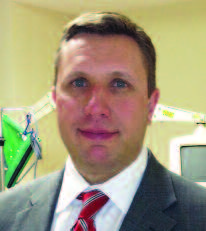 TAKING COMMUNITY ACTION
TAKING COMMUNITY ACTION
Joe McTernan, Senior Director of Community and Clinical Services, has been named to serve on the Union County Human Services Advisory Council (HSAC) through 2017. He will help influence a variety of community human services initiatives on the county level and those of the New Jersey Department of Human Services and the Department of Children and Families.
 40 YEARS…STILL ADVANCING
40 YEARS…STILL ADVANCING
Janine Graf-Kirk, RN, has been awarded a Doctor of Nursing Practice (DNP) degree from Walden University. She is the first nurse at Trinitas Regional Medical Center and the Trinitas School of Nursing to earn this advanced degree, which coincides with her 40th year as a nurse. Graf-Kirk also holds a Master’s degree in Nursing Education from New York University in 1988.
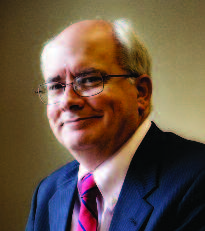 PREPARED TO LEAD
PREPARED TO LEAD
Upon the recent retirement of James Lape as Senior Vice President of Behavioral Health & Psychiatry and Long Term Care, James McCreath, PhD, has been appointed Vice President of Behavioral Health and Psychiatry. With 35 years of leadership experience, McCreath most recently served as President and CEO of Cerebral Palsy of New Jersey. A graduate of Seton Hall University, Jim also holds a Master’s from Columbia University School of Social Work and a Ph.D. from the NYU School of Social Work.
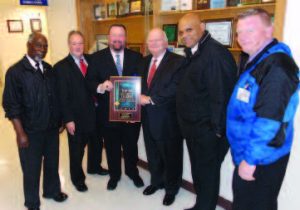 SECURE AROUND THE CLOCK
SECURE AROUND THE CLOCK
For its adoption and implementation of an innovative security system, the Trinitas Security Department was recognized as a “Power Player in Security Leadership” by Security Magazine. Pictured, left to right: Security Officer Westley Wallace, Glenn Nacion, VP of Human Resources, John Dougherty, Director of Security, Gary S. Horan, President and CEO, Security Capt. Alberto Ortiz, and Scott Janks, Security Manager, proudly display their award. The Trinitas Health Foundation funded the security system.
The Trinitas Emergency Department will double its size by the end of 2017.
By Caleb MacLean
Trinitas Regional Medical Center celebrated its 15th anniversary last month by unveiling plans to renovate and expand its Emergency Medicine Department. During the decade and a half since the merger of Elizabeth General and St. Elizabeth Hospital (which created TRMC), ER visits have been steadily increasing. The $18 million makeover will add 24,000 square feet of space and take place in three stages, to be completed some time in 2017.
“In 2013, we saw nearly 72,000 emergency department visits,” says Trinitas President and Chief Executive Officer Gary S. Horan. “With the expansion, we’ll be better able to continue to offer the highest level of patient care possible.”

Mercedittas “Mercy” Mallari, RN, MSN, Director of Nursing, Emergency Department, Gary S. Horan, FACHE, President and CEO, Maribeth Santillo, RN, MS, Senior Director, Emergency and Ambulatory Care, and John D’Angelo, DO, Chairman/Emergency Medicine, display the architectural rendering of the new Emergency Department expansion and renovation project that is expected to be completed in 2017.
The expanded Emergency Department, adds Horan, will offer patient care more rapidly and efficiently through new equipment that is positioned much closer to Emergency Department treatment areas.
“The expansion will include a new ultrasound room and a CT Suite for a 128-slice CT Scanner, which will reduce the need to transport patients to other testing areas.”
Besides doubling the number of treatment areas from the current 26 to a total of 52, the new facility will also provide an environment to reduce patient anxiety and offer a private area for families needing quiet time. The staff, meanwhile, will be trained to direct potentially disruptive patients to an area where they are less likely to distract doctors and other ER patients. A new lounge will also be created for First Responders from the various EMS squads that transport patients to the hospital.
Why the steady climb in emergency visits? According to Dr. John D’Angelo, Chairman of Emergency Medicine, many in the community do not have easy access to a primary-care physician. “They rely on Trinitas for treatment of the flu and urinary tract infections that might be more commonly treated in routine visits to a primary care physician,” he explains. “Also, with a population that is growing older, we see more cardiac and stroke cases due to age-related factors.”
 Trinitas has successfully integrated advanced emergency lifesaving treatment methods into the emergency angioplasty treatment process, Dr. D’Angelo points out. “Our team effort uses a ’30-30-30’ rhythm. 30 minutes for EMS responders to reach the patient, perform an EKG, and get the patient to us. 30 minutes for the Emergency Team to receive, stabilize and transport the patient to the cath lab. Then, 30 minutes for the Catheterization Team to open the occluded artery.”
Trinitas has successfully integrated advanced emergency lifesaving treatment methods into the emergency angioplasty treatment process, Dr. D’Angelo points out. “Our team effort uses a ’30-30-30’ rhythm. 30 minutes for EMS responders to reach the patient, perform an EKG, and get the patient to us. 30 minutes for the Emergency Team to receive, stabilize and transport the patient to the cath lab. Then, 30 minutes for the Catheterization Team to open the occluded artery.”
“Simply put,” he says, “every minute we save means a better outcome for patients.”
Colon cancer rates drop as screenings increase.
By Christine Gibbs
This February marks the 15th anniversary of the start of Colon Cancer Awareness Month. President Bill Clinton made it official in the final year of his presidency and, in the ensuing decade-and-half, nationwide initiatives have gotten the word out on the importance of exercise, healthy eating and regular screenings for individuals 50 and over. That being said, there is a long way to go.
Colon cancer is often used synonymously with the larger group of cancers that is more accurately named colorectal cancer. Although both colon and rectal cancer affect the large intestine, they are distinguished by both location and function (colon cancer affects the higher portion and rectal the lower portion). Colorectal cancer ranks #2 in the U.S. as a cause of cancer deaths and #3 overall in terms of the number of cases diagnosed.
Despite its prevalence, the early symptoms of colon cancer still frequently go unnoticed. The good news is that it is among the most treatable (and preventable) cancers, so as awareness continues to grow, there is every reason to believe that the number of deaths will decrease…dramatically. Currently, these are the facts—as collected by the American Cancer Society, the National Cancer Institute and the Centers for Disease Control and Prevention:
- About 1 in 20 (or 5 percent) of all Americans will develop colorectal cancer.
- 90% of new cases occur in individuals 50 years or older.
- People with a close relative (parent, sibling or child) with colon cancer are 2 to 3 times more likely to develop it themselves.
- Median age at diagnosis is 69.
- While the number of cancer diagnoses in older adults has dropped since 1985, studies by the National Cancer Institute indicate that the rate for those under 50 has risen. Why? “More people over age 50 are getting colonoscopies, resulting in a higher number of pre-cancerous polyps being discovered in that population,” explained Andrea Zimmern, MD, Colorectal Surgeon at Trinitas Regional Medical Center.
- It has been estimated that 60% of deaths could be prevented with screening.
- The annual cost of colorectal cancer treatment recently in the US is $8.4 billion.
UNDERSTANDING THE BASICS
The news isn’t all bad. A recent study showed a decrease of 30 percent in cases (and also deaths) in adults 50 or over. This change is being attributed primarily to the increase in the number of colonoscopies per year. There are actually more than 1 million colorectal cancer survivors in the US today. The American Cancer Society has outlined several major factors that impact dealing with Colon cancer:
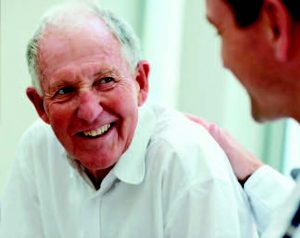
www.thinkstockphotos.com
Genetics
Certain tests have been developed—including Oncotype Dx Colon Cancer Assay, ColoPrint, and ColDx—to examine the role of genetic influences in forming colon cancer tumors in order to identify individuals who have a higher risk that an existing cancer will spread. Other tests are available to identify a predisposition to such tumors. According to studies by the Memorial Sloan Kettering Cancer Center, about 5 to 10 percent of all colorectal cancers are caused by a genetic mutation that can be passed from parent to child. For those individuals with a strong family history, professional genetic counselors can be consulted to help assess the level of potential risk.
Staging
Staging describes how far the cancer has spread in the body. For colorectal cancer, the stage is identified by whether the cancer has grown into the intestinal wall or other nearby structures, or if it has spread to the lymph nodes or distant organs. The importance of staging is that it helps with prognosis and treatment options. The staging process involves a physical exam, biopsies, and imaging tests such as CT or MRI scans.

The daVinci Robotic Surgery System is used at Trinitas for a wide variety of procedures, including colon and rectal surgery.
Treatment
Surgical options are constantly being evaluated and improved. It is the early-stage cancer that is best addressed with surgery. Approximately 95% of Stage I and 65%-80%of Stage II are surgically curable, according to Johns Hopkins researchers. Laparoscopic and robotic surgeries are becoming more widely used than invasive traditional techniques.

www.thinkstockphotos.com
Chemotherapy involves administering specific drugs that have been shown to kill certain cancer cells. Delivery can be via injection, intravenously, or even in pill form. Unfortunately, the drugs not only can kill rapidly growing cancerous cells, but healthy cells as well, which can cause debilitating side effects. Targeted therapy involves newer drugs that attack the specific cancer with fewer side effects. These are typically administered to advanced cases and can be very expensive. Research is also being conducted on immunotherapy alternatives, which involve developing vaccines that can boost the patient’s own immune system to help fight the cancer. Radiation therapy is another option, although it is used much more often for rectal cancer, according to Dr. Zimmern.
THE IMPORTANCE OF SCREENING
In the majority of cases, colorectal cancer is eminently treatable in its early stages, and even preventable through regular screening. Since its symptoms can go undetected, prevention requires attention and action. Popular TV anchor and personality, Katy Couric—whose husband succumbed to Stage IV colon cancer—became a well known advocate for colonoscopy screening by allowing her own procedure to be televised in March of 2000.
Colon cancer begins as a small, easily removed polyp growing on the lining of the colon or large intestine. A colonoscopy is the surest way to detect such a growth in its very early pre-cancerous stages. For anyone who is squeamish about this relatively painless outpatient procedure, investigating the computerized virtual colonoscopy may be worthwhile, although Dr. Zimmern advises caution. “Regular colonoscopy is still the best and only option that is both diagnostic and therapeutic. If we see a polyp we can remove it on the spot.” On average, a screening colonoscopy will discover polyps in 25 to 50 percent of asymptomatic patients, according to The American Society of Colon and Rectal Surgeons Textbook of Colon and Rectal Surgery. “This means that up to 50 percent of people who have a computerized virtual colonoscopy will need to go in for a regular colonoscopy afterwards,” Dr. Zimmern explains.
As with many cancers, lifestyle changes can also help to prevent colon cancer. It’s no surprise that increased risk factors include a diet of high-fat animal foods, being overweight, smoking, and inactivity. The secret to avoiding colon cancer is simple: stay healthy, stay informed…and get scoped!
 Andrea S. Zimmern, MD, FACS
Andrea S. Zimmern, MD, FACS
Colorectal Surgeon
908.994.8449
Emergencies can arise any time, day or night, any time of the year. By definition, you never know when you, a friend, relative or co-worker—or a complete stranger—will need emergency assistance…and if you will be the one who has to make the call. In 2015, the number of 911 calls made in the U.S. is likely to top a quarter-billion. The number of emergency calls has continued to rise as cell phones become more prevalent, which puts a lot of pressure on the 911 operators who field those calls—especially in a medical emergency. To make sure you get the help you need fast, the key is to remain calm and be precise. Dr. John D’Angelo, Chairman of TRMC’s Emergency Medicine Department, answers EDGE readers’ questions on emergency calls.
When should I call 911?
You should call 911 for any emergency situation, defined as an injury to a person, animal or property. The emergency situation should be called in while in progress. It’s important to place that call as quickly as possible as the emergency is happening. You should not wait to call 911 after an event has occurred. If someone is not breathing, unconscious, bleeding profusely, seizing or convulsing or experiencing some other life-threatening situation, make the call—even of you are in doubt.
What medical emergencies in adults are “time-sensitive” and should generate a 911 call?
Let’s talk a little bit about “alarming symptoms.” If you or someone around you experiences chest pain, shortness of breath, weakness in an arm or leg, or a speech deficit, you should call 911. Heart attacks and strokes are especially time-sensitive disease entities. Heart attack and stroke patients who present early to the Emergency Department fare much better than those who come in after a long delay. Abdominal pain in the elderly is another time-sensitive disease. The longer such pain in the elderly goes undifferentiated, the greater the likelihood for a poor outcome.
How about children? When should I call 911 for them?
Alarming symptoms for children are generally respiratory in nature. Alarming signs observed by a parent or caretaker include a child with nasal flaring, grunting, retractions, and new or refractory wheezing. All warrant a call to 911. Ingestions of any possible harmful or toxic solutions or products are another reason to call 911. In this situation, I recommend you also place a call to a poison control center. The New Jersey Poison Center number is 1–800–222–1222.
What should I bring to the ER?
In the case of a child who has swallowed something harmful, bring the container or a picture of the ingested agent with you to the emergency department. This is important because all caustics—such as household cleaners, presciption and over-the-counter medications—are not created equally. The poison center, as well as your emergency providers, need as much information as possible to adequately explore an effective antidote. Also, it is imperative to obtain as much information as possible from caregivers regarding the time of ingestion and quantity consumed.
Who answers my 911 call?
It really depends on your geographic location. When you call 911, your call will be fielded by either a Public Safety Answering Point (PSAP) or a Public Safety Dispatch Point (PSDP). The 911 call-taker will ask you, “What’s your emergency…?” They will then handle the call themselves or transfer you to the local Emergency Dispatch Center that can best manage the emergency. In New Jersey, most 911 calls are handled by the local municipalities.
What other questions should I be prepared to answer when I call 911?
Where is the emergency taking place? Who is involved in the emergency? When did the emergency occur? The key to answering these questions is to be concise. The Emergency Medical Dispatcher is listening for what service a caller needs. They will take the information you give them and connect you with the appropriate dispatch unit—Fire, Emergency Medical Services or Police.
What if the person calling 911 is not fluent in English?
Municipalities actually contract with multilingual vendors who can assist with any language.
Does it make a difference if I call 911 from a land line or my cell phone?
It could. A land line ensures rapid dispatch to your exact location. If you call from a cell phone, your call may be picked up by the closest tower, then rerouted or transferred to the local municipality capable of handling the call. If possible, use a land line.
Why do you have to “stay on the line” while waiting for help to arrive?
Emergency Medical Dispatchers will assist you with pre-arrival instructions. They may assist with CPR instructions, basic life support, or fire safety. They will also help you to remain calm until help arrives, or answer questions if the emergency situation suddenly changes.
COLOR ME READY
You never know if a child will be the person making the call in a 911 situation. The state of New Jersey’s Department of Human Services actually offers a coloring book with simple language and images
for children, showing them how to respond to emergencies. You can download this helpful teaching tool at state.nj.us/911/kids/book/911book.pdf.
 Do you have a hot topic for Dr. D’Angelo and his Trinitas ER team?
Do you have a hot topic for Dr. D’Angelo and his Trinitas ER team?
Submit your questions to AskDrD@edgemagonline.com
Editor’s Note: John D’Angelo, DO, is the Chairman of Emergency Medicine at Trinitas Regional Medical Center. He has been instrumental in introducing key emergency medical protocols at Trinitas, including the life-saving Code STemi, which significantly reduces the amount of time it takes for cardiac patients to move from the emergency setting to the cardiac catheterization lab for treatment.
News, views and insights on maintaining a healthy edge.
 Experimental Drug Looks Good vs. MRSA
Experimental Drug Looks Good vs. MRSA
Antibiotic-resistant superbugs that have hospitals and doctors gravely concerned, including MRSA, may have a new superhero in the form of the experimental drug, Staphefekt. In a recent trial conducted by the Dutch biotech company that makes it, five of six patients with the MRSA infection on their skin were cured. Staphefekt works differently than traditional antibiotics, which need to penetrate bacteria to be effective. Staphefekt latches onto the wall of the bacteria and releases an enzyme that eats a hole through the membrane to get inside. The hope is that bacteria won’t be able to adapt to this type of attack. “This is an exciting new concept in our fight against harmful bacteria,” observes William Farrer, MD, Chief of Infectious Disease at Trinitas. “However, I would stress that Staphefekt can be used only on superficial Staph skin infections such as acne and impetigo, not on more serious infections such as abscesses, pneumonia, or blood stream infections.

William Farrer, MD Chief of Infectious Disease 908.994.5455
” Hopefully, adds Dr. Farrer—who also serves as Associate Professor of Medicine at Seton Hall’s School of Health and Medical Science—the technology will be extended to other bacteria and for systemic use. Indeed, some scientists believe this type of antibiotic can be “trained” to kill only bad bacteria and not the beneficial bacteria in our bodies.
 A Blunt Assessment of Marijuana
A Blunt Assessment of Marijuana
As state after state legalizes marijuana, the medical community is looking more closely at the effects of THC, the psychoactive ingredient in marijuana, on human brains. It is well accepted that THC impacts short-term memory and that marijuana-using adolescents can experience long-term impact on the developing brain. A recent study conducted jointly by Northwestern and Harvard Universities showed that the concentration of THC in marijuana may be a key contributing factor. The researchers noted that currently available marijuana is three to four times more potent in terms of THC concentration than 20 years ago. College students who used marijuana four times a week underwent brain scans and all were found to have slight structural abnormalities of the nucleus accumbens—an area associated with pleasure and pain and, by extension, motivation. “This may explain the amotivational syndrome that has been described in earlier literature as a complication of marijuana use,” according to Anwar Y. Ghali, MD, MPA, Chairman of the

Anwar Y. Ghali, MD, MPA Chairman, Psychiatry 908.994.7454
Department of Psychiatry at Trinitas. “Also, studies have demonstrated that marijuana use accelerates the precipitation of schizophrenia in 40 percent of patients who developed that illness. In addition, studies also have shown that many of those who use marijuana go on to abuse other and more addictive substances.” One of the Harvard-Northwestern study co-authors commented, that if he were to design a substance that’s bad for college students, “it would be marijuana.”
 Obesity and the Brain
Obesity and the Brain
More bad news about the effects of a poor diet—this from the November meeting of the Society for Neuroscience. New research findings presented during Neuroscience 2014 suggest disturbing connections between obesity and brain function. For example, exposure to a high-fat diet in the womb may alter a child’s brain “wiring” in ways that alter eating habits later in life. Another study suggests that being overweight is associated with shrinkage of a part of the brain involved in long-term memory of older adults. “We are aware there is an association between obesity and the brain, and how the food we eat plays a major role in our overall health and well being,” notes

Ari Eckman, MD
Chief of Endocrinology and Metabolism 908.994.5187
Dr. Ari Eckman, Chief, Division of Diabetes, Endocrinology and Metabolism. “What is not clear is what the exact mechanism of that association is. Since none of these findings is conclusive, further research is needed to determine the impact of obesity on the brain, but this information presented at Neuroscience 2014 certainly sheds light on another possible danger of being obese.” One more bit of alarming research from the conference hinted that a high-fructose diet during adolescence could affect the brain’s response to stress and also exacerbate depressive behavior.
…and 21 other expressions that drive me crazy.
By Mark Stewart
I have issues with I have issues. In my career as a writer and editor, I find myself sideswiping people in the financial, legal, medical, tech, sports, publishing and public relations industries who subject me to what I consider to be an inordinate number of expressions that either don’t say what they mean, don’t mean what they say, are utterly redundant or are subject to serial misuse.
I’m not talking about industry-specific jargon; that at least has a cultural component. The words and phrases that burrow under my skin are ones we all employ on a regular basis without even listening to the jibberish spilling out of our mouths. Perhaps the most annoying aspect of these overwrought expressions is that I catch myself using them all the time. Like the rest of the world, I have my lazy, semiliterate moments—even though I am paid not to.
So here are my Top 20. How many do you hear in a given day? Be honest…how many are you guilty of using?
Absolutely!
This is often the one-word response to something that requires nothing more than the word Yes or even a simple head-nod. I’ve noticed that a lot of service people have started using the word. “May I have some water when you come back to the table?” Absolutely. It’s become a kissing cousin to the word Obviously, which people use when something is not at all obvious.
At the end of the day…
I don’t know about you, but the end of my day rarely brings resolution to anything other than being awake. I wonder, do people who work the night shift ever say At the end of the day…? If so, wake me up so I can slap them. Actually, this expression has some history behind it: In the early 1800s, when the day ended, there was only (poorly lit) night, so everyone had to stop whatever they were doing until it was light again.
At this point in time…
Just to be clear, this is really code for Until I tell you otherwise, because it covers way more time than a single point in time.
Everything happens for a reason.
Well, technically this is true. My issue with the phrase is that, while brilliant minds like Einstein and Hawking spend their lives trying to express this concept in mathematical terms, the rest of us dullards use this old saying when we have no clue what the reason for something is.
If I would have…
This is a tense with which I am unfamiliar. It’s like a mad twisting of the subjunctive. In truth, it’s not a tense at all. The correct construction is either Had I… or If I had…
I have to say…
Fine. Go ahead. You don’t need anyone’s permission.
I have issues with…
If these issues are important topics of debate, I’m all for a lively discussion. If these issues are only inside your head, work them out and get back to me.
I mean…
Wait. Did you just say something you didn’t mean?
I’m not comfortable with…
Your comfort is not my concern, so find another way of saying I disagree or That’s a bad idea.
It is what it is…
Annoying because it relieves the utterer of any responsibility for analyzing or responding meaningfully to a situation. Doubly annoying because often it is not what it is, but something entirely different.
It’s all good.
Rarely, if ever, is it all good.
No-brainer
So are you saying this is a good idea or a stupid one? Or that it’d be stupid not to think it’s a good idea? Or that giving it more thought would require no brain? Now my head hurts.
No worries!
I’m sorry. Are you Australian? I didn’t think so. For future reference, It’s okay or Don’t worry will do just fine.
Old school
The more I think about this adjective, the more it annoys and confuses me. First of all, it should be hyphenated, yet never is. Second of all, its meaning is different when a young person uses it and an old person uses it. Third of all, let’s face it, young people have almost no concept of what old people were doing when they were young. And fourth of all, if you took courses at the New School in New York City back in the 1980s, is everything you learned now considered Old School?
Personally…
C’mon, is this any way to start a sentence? I assume whatever observation or opinion you are about to offer is personal, because you are saying it.
Same difference
Thankfully, people don’t use this much when they’re being serious because, seriously, does anyone really understand what it means?
Thanks in advance…
I am guilty of using this phrase in the manipulative way it was intended, as a means of saying to someone In case you were thinking of not doing this annoying thing I want you to do, forget it—you now have no choice because I’ve already thanked you. It’s like warning someone not to go back on a promise they haven’t even made yet.
That’s a great question.
This is a very “versatile” response. It can mean Wow, I never thought of that and I probably should have or That question was idiotic, but you’re my boss or client and I’d rather not be fired today. Often, it is a way of drawing someone timid into a group conversation, which I guess is a fairly benign use of the phrase. Ironically, there is one time when you almost never hear people say, “That’s a great question”—when someone actually asks a great question.
To be honest…
Hold on a second. At what point were you not being honest? When I hear someone say this, I instantly assume that some part of what they are about to say might be a lie.
What’s done is done.
Technically true, but that’s no reason to give up on something you might still be able to change or fix.
With all due respect…
There are certain people who’ll begin a sentence with With all due respect… and you just know that what’s coming next is going to be the most disrespectful thing you have heard all day. Admit it, you know at least one person like this.
YOLO
Short for You only live once. I don’t hang out with people who actually use this word, but it irritates me just to know that these people exist. I wonder if Hindus ever say YOLO…because I’d have an issue with that.
Editor’s Note: In case you were wondering, the author’s #23 most annoying expression was My bad. Visit the EDGE Facebook page to add your pet peeves to the list—including Pet peeve (which came in at #32).
Issue-Resolving Personal Products
FETCHING FASHION
The stylish ThunderShirt by Thunder Works transforms crazed canines into calm ones by exerting gentle pressure during stormy weather. Available at petexpertise.com.
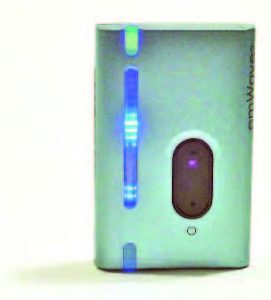 BEAT GENERATION
BEAT GENERATION
The EMWave2 is Heart Math’s newest personalized biofeedback device, which enables users to monitor their heart rate and even display it on a computer screen. Available at heartmath.com.
 VISION QUEST
VISION QUEST
Precision-designed Haus Computer Glasses are the answer to digital eye fatigue. Is that actually a thing? Available at gunnars.com.
 FINANCIAL AIDE
FINANCIAL AIDE
The feathery light and super-strong, identity theft-thwarting Carbon Fiber Wallet blocks radio waves to keep hackers out of your purse or pocket. Available at hammacher.com.
 LIGHTEN UP
LIGHTEN UP
The Philips Wake Up Light Plus uses UV-free halogen illumination to bring dawn gently into your bedroom and also mimics the fading light at dusk to help you fall asleep. Available at philips.com.
 GET SMART
GET SMART
The Smart Home Kit by Little Bits Electronics offers home automation solutions for the do-it-yourselfer. Available at littlebits.com.
Stress-Relieving Personal Products
 INTO THE WOOD
INTO THE WOOD
The Tabletop Wood Stump Fountain is an artisanal take on an age-old secret for reducing stress. Available at builddirect.com.
 ON THE BALL
ON THE BALL
The Ergo Desk Chair features an award-winning lo-tech/hi-tech design that promotes balance, posture and rock-hard abs. Available at theergochair.com.
 WARMING TREND
WARMING TREND
The Feel Good Hug rice-heated Ginger Body Wrap soothes the soul with ginger and lemon essential oils. Available at origins.com.
 LOBE STORY
LOBE STORY
Me Stressed Earrings are a fashionable way to remind friends, family and co-workers to just chill out. Available at cafepress.com
.
 BACK TO THE FUTURE
BACK TO THE FUTURE
Sit straight, shoulders back, head up—your Mom was right, but she probably didn’t have the Swarovski-studded Lumo Lift Posture Alert in mind. Available at lumobodytech.com.
 SWEET DREAMS
SWEET DREAMS
The Wrap-A-Nap is a combination neck/headrest, eye- and ear-covering that helps you fall asleep almost anywhere. Available at wrapanap.com.
Products for the Leg-Weary
 LEG CANDY
LEG CANDY
Step out in style while supporting circulation with these kicky Compression Knee-Highs. Available at supportplus.com.
 GYM DANDY
GYM DANDY
The breathable, flexible and perfectly cushioned Asics Gel Harmony TR 2 was picked by Fitness magazine as the top cardio/cross-training shoe for women in 2014. Available at asicsamerica.com.
 THERE’S THE RUB
THERE’S THE RUB
The Soothera Foot Massager proves you don’t have to break the bank to bring a little Shiatsu action into your home. Available at amazon.com.
 PAIN MANAGEMENT
PAIN MANAGEMENT
There’s nothing fun about a foot or ankle injury, unless you count MediFashions’ line of Medical Boot Accessories. Available at healinstyle.com.
 UP IN THE AIR
UP IN THE AIR
Kangoo Jumps combine the latest spring technology with athletic training footwear to provide a crackin’ good workout. Available at kangoojumps.com.
 TOE HOLD
TOE HOLD
Bella Grip Socks are a colorful and sure-footed way to get through your next yoga class. Available at toesox.com.
Selling your plugged-in kids on summer camp.
By Diane Alter
The current crop of 6-to-16-year-olds represents the most connected generation in human history. And the most disconnected. We have social media, gaming, smart phones and the Internet to thank for that. We also have those things to thank for the fact that our kids may never fully appreciate the sounds of frogs singing, crickets chirping and cicadas humming. They will likely miss out on trekking through unknown territory (without GPS help), the smell of liberally applied bug spray and what happens when you move too suddenly in a canoe. They will be camera-ready at all times, to be sure, but by the time they want to relive their childhood summers, it’ll be too late to realize that those cameras were mostly pointing the wrong way.
Fear not. Thanks to a robust group of thriving summer camps, unplugged and idyllic times are still possible. Camps offering unspoiled days starting with quiet, dewy dawns and ending with dusk’s pale pink and bright orange skies do exist. As for the kids who prefer to tap their inner selves and take a more cerebral approach to summer, the specialty camps that cater to this market also do a good job getting them out in the fresh air (albeit occasionally against their will). Study after study shows that kids exposed to camp experiences and outdoor sports at an early age are likely to continue them for the rest of their lives. They also have better self-esteem and tend to do better in school than non-campers.
“The benefits include everything from improved mental health to brain restoration to community building,” confirms Laurel Peak, program manager and mentor at Wild Whatcom—a popular adventure camp in the Pacific Northwest.
Seeing as this is the time of year most parents finalize their plans for sleep-away summers, it’s a good idea to get a feel for the range of offerings around the United States. These 10 do an excellent job of promoting outdoor experiences. Some are thousands of miles away, while others are a relatively short drive away.
The Appalachian Mountain Club, founded in 1876, promotes the protection, enjoyment, and understanding of the mountains, forests, waters, and trails of America’s Northeast and Mid-Atlantic regions—with the goal of making kids lifelong stewards of the great outdoors. With chapters from Maine to Washington, D.C.—including groups in Boston, New York City, and Philadelphia—young people enjoy activities like hiking, paddling, cycling, and skiing. “AMC is committed to getting kids outside, enjoying the time spent outdoors and fostering a closer connection with nature through our many offerings,” says Rob Burbank. “Without question, it’s a challenge to get kids outdoors. But we offer a number of enticing programs that enable kids to interact with the outdoors and achieve a deeper connection with a great big world that’s void of cellphones and computers.”
 Avid4Adventure in Boulder, CO teaches hiking, biking, climbing and paddling—building skills, grit and determination. “Kids from all over the country come for our outdoor adventures,” says Ileana Street. “Stand-up paddle boarding, rock climbing, and mountain biking are just some of our activity offerings. We make sports inviting not intimidating. It’s empowering to master a new skill and it’s a confidence-booster.” Campers stay in comfortable (but not cushy) cabins, and meal-wise, Avid4Adventure accommodates any kind of diet. Programs change every year so that repeat guests are introduced to new challenges.
Avid4Adventure in Boulder, CO teaches hiking, biking, climbing and paddling—building skills, grit and determination. “Kids from all over the country come for our outdoor adventures,” says Ileana Street. “Stand-up paddle boarding, rock climbing, and mountain biking are just some of our activity offerings. We make sports inviting not intimidating. It’s empowering to master a new skill and it’s a confidence-booster.” Campers stay in comfortable (but not cushy) cabins, and meal-wise, Avid4Adventure accommodates any kind of diet. Programs change every year so that repeat guests are introduced to new challenges.
 Bold Earth in Golden, CO, offers teenagers an adventure-travel summer camp filled with exploration, learning and discovery. The camp focuses on small groups and promotes leadership, teamwork and excellence in a supportive environment. “We introduce kids, in a very successful way, how to be in the game instead of simply playing the game,” says Abbott Wallis. “There are no locked doors, no HBO, and it’s all super-honest. We teach kids how to connect with others. We turn the entertainment on while turning the computers off. In bringing out laughter, dancing, and singing, we make sure that when kids return home they have a big story to tell—It was incredible…I was incredible.” Since 1976, over 15,000 students from 50 states (and more than 55 countries) have attended Bold Earth. Parents and teens are actually interviewed before being accepted.
Bold Earth in Golden, CO, offers teenagers an adventure-travel summer camp filled with exploration, learning and discovery. The camp focuses on small groups and promotes leadership, teamwork and excellence in a supportive environment. “We introduce kids, in a very successful way, how to be in the game instead of simply playing the game,” says Abbott Wallis. “There are no locked doors, no HBO, and it’s all super-honest. We teach kids how to connect with others. We turn the entertainment on while turning the computers off. In bringing out laughter, dancing, and singing, we make sure that when kids return home they have a big story to tell—It was incredible…I was incredible.” Since 1976, over 15,000 students from 50 states (and more than 55 countries) have attended Bold Earth. Parents and teens are actually interviewed before being accepted.
Camp Harmony in Warren, NJ has both day-camp and one-week sleep-away programs. It offers a safe and friendly environment where girls and boys can make friends, discover new passions and learn to be independent. Activities include archery, arts and crafts, computers, cooking, drama, earthlore, gaga ball (a type of pinball), hip-hop dance, karate, music, miniature golf, tennis and other sports. “Camp Harmony and its staff dedicates itself to the mission of ensuring the safety and well-being of every single child, while providing a fun, unique and creative learning experience that fosters unforgettable moments, lasting friendships, an unrivaled sense of belonging and lifelong memories,” says Carol Amedo. The goal, adds her husband, Jerry, is to create the “ultimate summer of their lives.”
 Hi-Hills Day Camp at Gill St. Bernard’s in Gladstone, NJ offers a variety of programs for children ages 3 to 15 across 10 summer weeks. Whether a family’s goal is enrichment, academics, sports, fine arts or traditional camp programs, Hi-Hill has become quite good at offering something for everyone. Traditional camp activities include instructional tennis, yoga, archery, pottery, nature, technology, swimming, and dance. Teen travel programs (for ages 13 to 15) offer a mix of day camp activities and travels to nearby attractions, plus one five-day overnight trip. Enrichment programs includes academics, athletics, creative and performing arts—all which can be combined with any of Hi-Hills day camps. “What makes Hi-Hills unique,” says Allyson Day, “is that we are one of the most flexible camps. We recognize that summer is just as busy, if not busier, than a hectic school year. With that in mind, children can attend one or more of our programs for a half-day, half-week or whatever fits into their schedule.”
Hi-Hills Day Camp at Gill St. Bernard’s in Gladstone, NJ offers a variety of programs for children ages 3 to 15 across 10 summer weeks. Whether a family’s goal is enrichment, academics, sports, fine arts or traditional camp programs, Hi-Hill has become quite good at offering something for everyone. Traditional camp activities include instructional tennis, yoga, archery, pottery, nature, technology, swimming, and dance. Teen travel programs (for ages 13 to 15) offer a mix of day camp activities and travels to nearby attractions, plus one five-day overnight trip. Enrichment programs includes academics, athletics, creative and performing arts—all which can be combined with any of Hi-Hills day camps. “What makes Hi-Hills unique,” says Allyson Day, “is that we are one of the most flexible camps. We recognize that summer is just as busy, if not busier, than a hectic school year. With that in mind, children can attend one or more of our programs for a half-day, half-week or whatever fits into their schedule.”
International Ivy offers summer enrichments programs at 11 New Jersey locations. It was established to give kids creative, hands-on and intellectually stimulating learning experiences during the summer. International Ivy offers 50 week-long, full- and half-day classes that run the gamut from computer programming to biomedical engineering to the engineering of ice cream to golfing to chess. “Our ultimate goal is to help our students find their passion,” says Lily Wong. “Once they find it, they are self-motivated to learn and explore further. For students who opt for our indoor classes, we build in two 30-minutes breaks each day for some outdoor activity and sun.” A former head of innovation at Pfizer, Wong makes sure International Ivy’s classes always feature the latest technology. The Caldwell branch offers residential housing for international students.
 Otter Bar Lodge Kayak School on the Salmon River in Northern California is a premier kayak school. Its location may be remote, but the atmosphere is intimate and friendly. “Our concept is simple: keep it small, personable and first-class,” says Peter Sturges. “While we specialize in river kayaking, we also offer a number of other outdoor activities. Some kids come as kayak newbies, while others are experienced. Many come back year after year.” There is no Internet service for the kids, adds Sturges’s wife, Kristy, and they aren’t allowed to bring any electronics. “We keep them busy from dawn to dusk, so they don’t miss their smartphones or video games,” she says. “We have found over our thirty years in operation that given the choice, kids would rather be outdoors, learning or perfecting a new sport than typing away on electronics.” She adds the kids actually enjoy the remoteness, church-like silence and absence of tech distractions.
Otter Bar Lodge Kayak School on the Salmon River in Northern California is a premier kayak school. Its location may be remote, but the atmosphere is intimate and friendly. “Our concept is simple: keep it small, personable and first-class,” says Peter Sturges. “While we specialize in river kayaking, we also offer a number of other outdoor activities. Some kids come as kayak newbies, while others are experienced. Many come back year after year.” There is no Internet service for the kids, adds Sturges’s wife, Kristy, and they aren’t allowed to bring any electronics. “We keep them busy from dawn to dusk, so they don’t miss their smartphones or video games,” she says. “We have found over our thirty years in operation that given the choice, kids would rather be outdoors, learning or perfecting a new sport than typing away on electronics.” She adds the kids actually enjoy the remoteness, church-like silence and absence of tech distractions.
Sandborn Western Camp in Florissant, CO has been hosting boys and girls from all over the world for six decades. The western-themed camp offers horseback riding, rock climbing, canoeing, swimming, tubing, archery, pottery and more. For many suburban campers, Sandborn is the first time that they know what it really means to be content without electronics. “We offer outdoor adventures that are appropriately challenging,” says Mike MacDonald. “We have over six thousand acres for kids to explore. They find great value and power in being outdoors.” Kids learn to become truly aware of nature’s bounty, he adds, and that awareness stretches their minds and helps them grow as people. “They’re eager to ‘climb the mountain’—whatever the mountain might be—and find out just how unique and strong they are.”
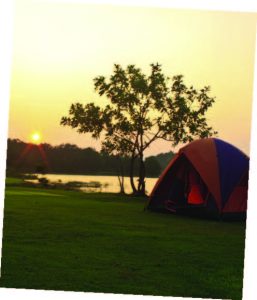 EXPLORE MORE
EXPLORE MORE
For more information on the camps in this section, log onto the web addresses below. Camps in (or close to) New Jersey are in bold:
Appalachian Mountain Club • outdoors.org Avid4Adventure • avid4.com
Bold Earth • boldearth.com
Camp Harmony • campharmony.com
Hi-Hills at Gill St. Bernard’s • hihills.com International Ivy • iisummer.com
Otter Bar Lodge • otterbar.com
Sandborn Western Camps • sandbornwesterncamps.com Wilderness Adventures • wildernessventures.com
Wild Whatcom • wildwhatcom.org

www.thinkstockphotos.com
Wilderness Adventures has dedicated the last 41 years to helping teens from all over the globe become responsible adults through challenging and meaningful year-round outdoor adventures—from surfing to snowboarding. With each passing year, the company finds it must focus more and more on what used to be considered the “basics” of the camp experience. “Many young people today don’t know how to communicate face-to-face,” says Mike Cottingham. “We show them how. We’ve been electronics-free from the beginning; these days it can be difficult to convince kids that escaping the comforts of home will open them up to a new world that’s far more fun than the one they leave behind. Yet we do. Our students experience beauty beyond description, and become valuable contributors to our small groups. They establish lifelong friendships and many discover who they really are for the first time in their lives.” Wilderness Adventures camps are located in Washington, Oregon, Alaska, California, Hawaii, Wyoming, Idaho, Colorado, Utah, Arizona, New Mexico and in several international destinations.
 Wild Whatcom in Bellingham, WA immerses boys and girls in exploration of the Northwest’s vast forests, wild rivers, mountainous meadows, tumbling waterfalls and pebbled beaches. “We aim to help kids discover their capabilities through suitable challenges, to better understand themselves and others,” says Laurel Peak. Wild Whatcom campers hike the Cascade ridges, watch the sunset over the Pacific, sleep under a star-studded sky, and play games that promote meaningful connections and new discoveries.
Wild Whatcom in Bellingham, WA immerses boys and girls in exploration of the Northwest’s vast forests, wild rivers, mountainous meadows, tumbling waterfalls and pebbled beaches. “We aim to help kids discover their capabilities through suitable challenges, to better understand themselves and others,” says Laurel Peak. Wild Whatcom campers hike the Cascade ridges, watch the sunset over the Pacific, sleep under a star-studded sky, and play games that promote meaningful connections and new discoveries.
Editor’s Note: After working for many years on Wall Street covering for brokers, Diane Alter started covering the markets for print and electronic media in 2009. She is a regular features contributor to EDGE and other publications and web sites. When not writing, she is likely running.
Last year, Diane Alter wrote a story for EDGE about Extreme summer camps. You can find it at edgemagonline.com in the Family section. Also in that section is a helpful How-To story by Chris Gibbs on picking the right camp for your child.
Television is in the midst of a Golden Era. By most accounts, there are more challenging, intelligent and interesting roles for women than ever before. Which makes finding exactly the right actress to fill these roles more important than ever before. Producers would probably sleep a little easier if they could just print up a few dozen copies of Lisa Edelstein. During a career that stretches back more than two decades, she has distinguished herself as one of the most challenging, intelligent and interesting performers on American television. Lisa grew up in Wayne, the daughter of a pediatrician and a social worker. Her passion for performing took her to NYU and then MTV, and eventually to a series of recurring roles on series such as Seinfeld, Ally McBeal, Felicity, Leap of Faith and The West Wing. After 150-plus episodes as one of the stars of House, Lisa was picked to star in Girlfriends’ Guide to Divorce—a series developed by Marti Noxon (Buffy the Vampire Slayer, Grey’s Anatomy, Mad Men) and inspired by the best-selling line of Girlfriends’ Guide books by Vicki Iovine. The series is unique in many respects, most notably as the first scripted series developed by the Bravo network. As EDGE Editor-at-Large Tracey Smith discovered, this is hardly what makes Lisa unique…and far from her first pioneering role.
EDGE: When did you first feel comfortable stepping out on stage?
LE: When I was born. (laughs) I never wanted to do anything else. I just loved performing. I did a lot of dance recitals and a lot of school plays. If you asked me to carry a sign across the stage, I’d be thrilled. I told my parents when I was four years old that this was what I was going to do for a living. As soon as I was old enough, I began investigating how to do it as a grown-up, so starting at a young age I would go into New York to see where the agencies were and to get pictures made, just trying to figure out how things worked.
EDGE: Where were you in the process by the time you had enrolled at NYU?

Photo by Nadine Raphael • Dress: ALLSAINTS, Bloomingdales, Short Hills
LE: I had learned enough on my own that I had actually become a bit cynical in class. I felt that they weren’t actually talking about how to be an actor, they were just doing an acting class. I wanted to know how to be an actor. I was still figuring it out, just stumbling my way through. I was really involved with the club scene in New York at the time and I got a lot of attention for that. I sort of used that attention to produce a musical that I wrote about the AIDS crisis. It enabled me to be seen as a professional, but also it was so horrendous what was happening, it was really important that we found a way to talk about it.
EDGE: You also had a stint on MTV.
LE: Yes, for about seven months. I called it “4 Hours a Day 5 days a Week of National Humiliation” (laughs), It was really awful, but I learned a lot.
EDGE: What were some of your other early experiences in television?
LE: One of my first jobs in Los Angeles was L.A. Law. That was very exciting. Then I did a series that no one ever saw because in the middle of the fourth episode, the Executive Producer insulted the head of the studio during a script review and the whole show was canceled on my way to work. (laughs) No more job! There are a lot of things that happen along the way, a lot of “almost-jobs” that might have changed my life, but didn’t. But also a lot of little jobs that did change my life. You just keep going forward.
EDGE: What separates those who make it from those who don’t?
LE: I think one of the first things that weeds people out of this business is a lack of fortitude, not a lack of talent. This is a very, very challenging business emotionally. You need persistence and stubbornness, you have to really love the job. Not everybody is so fortunate to love what they’re doing, so in a way you’re cursed by wanting to be an artist (laughs). What a difficult and challenging career path this is. Yet at the same time, you’re blessed with knowing that there’s something out there that you love you to do. It is a real gift if what you’re doing also feeds you. I’ve always been very grateful for that, even at the bleakest moments. You know, the funny thing about being an actor—unlike most jobs—is that when you say, “I’m an actor,” you have to prove it. People want to know where you’ve done it, and then they want to decide whether or not they’ve seen it, or if they liked it. (laughs) You’re sort of judged, sometimes positively, sometimes negatively. Sometimes they just feel sorry for you. I think that’s true for any career in the arts, but particularly acting.
EDGE: You are now the star of Bravo’s first scripted series. That’s a big culture change for a network. Were you involved in that transition?
LE: No, no. It was already happening when I got there. This was not the first pilot they made—I think it was the second. They’d been reading scripts and playing with this idea for years. I read that first script and I loved it, but Bravo didn’t feel it was the right brand for the network. However, I already could tell by reading it that they were on the right track. They were picking smart projects that were dark and funny and interesting. After us, they are doing another show called Odd Mom Out. It’s a half-hour comedy and it’s really funny and really dark and I really like it. Bravo’s a great network. They really have thrown everything at us in the most wonderful way. They have been incredible promoters and really behind the show creatively. They are genuinely excited about the decisions they made and going for it—there’s no wishy-washiness. They take a really long time to make a decision, so when they make a decision they are not kidding. It’s been a real pleasure.
EDGE: What type of feedback are you hearing about your character, Abby?
LE: It is so exciting. It’s really exciting. When I did House, people would come over and talk about the show and how much they loved it, or ask things about Hugh Laurie’s character like, “doesn’t it drive you crazy he’s so mean to you?” But on this show, when people recognize me, they want to talk about their lives, they want to tell me why they relate to the show, and who it reminds them of and when my character did such and such. It’s very personal. It’s a great feeling because I really love this project and I really want to do more of it. I love the writing, I love the people I’m working with. The experience has been extraordinary. I’ve been working for a long time, so having an experience like this that tops everything else—it’s been a dream come true.
EDGE: You’ve worked with some seriously funny co-stars, including Hugh on House and, now, Janeane Garofalo on Girlfriends’ Guide. Does she bring a lot of silly to the set?
LE: Janeane is hilarious, but she’s not a very silly person. She is very serious, with a very sharp wit, but she’s not a clown. It is very important to Janeane that she can inhabit what her character is doing and saying, so she works in a very specific way and it was really a lot of fun to volley with her in that way. She’s great, she’s smart, and she’s a very interesting woman.
EDGE: The two of you grew up less than an hour apart, in Wayne and Newton. Did you already know each other?
LE: We did. We actually met many years ago, in 1990. She worked at MTV around the same time I did, and we have a lot of mutual friends.
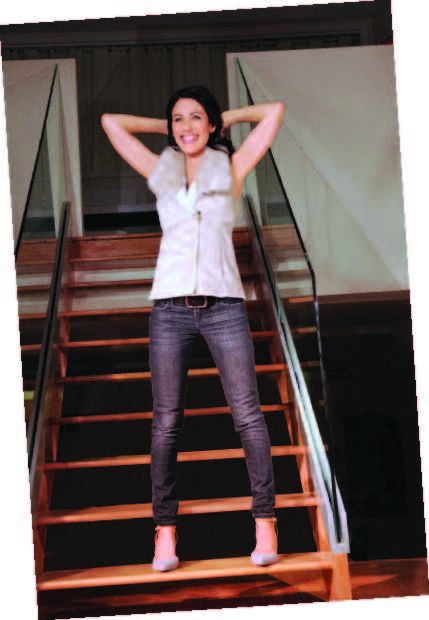
Photo by Nadine Raphael
Vest: NICK+ZOE, Lord and Taylor, Westfield; Shoes: POUR LA VICTOIRE, Sole Shoes, Westfield
EDGE: Do you and Janeane bring some Jersey Girl toughness to your characters?
LE: Janeane’s character is tough, but I don’t know if Abby is tough. She certainly bounces back, but I don’t know if tough is a word I would use with Abby.
EDGE: Each of your episodes is themed around a “Rule”…do you have your own set of “Lisa Rules” that have allowed you to be successful?
LE: Yeah, I guess I do. I do have some rules. Never say yes to a job you don’t want. Never go out with a man who can’t ask you out on a specific date. He’s too wishy-washy. No one can eat meat in my house. Those are my rules, for me. I wouldn’t say they apply to everybody.
EDGE: You once said in an interview that you don’t care if you’re the star, that you really like to be part of an ensemble…and that you want to “use my brain as much as I possibly can.”
LE: Is that an old quote? That’s amazing in a huge way because now I get to sort of experience all of that. What’s so exciting about the Bravo series is how deeply involved and relied upon I am. All parts of me are used, and I love that. I am working 16 hours a day when we’re shooting almost every day. My attitude and dedication to the project has a big effect on the set. It’s important to me that the place I work is the place I’ve always wanted to work and having the opportunity to create that type of environment is a real blessing. I hope I’m doing a good job. Marti Noxon really trusts me. When a scene is being constructed, she often listens to my ideas and I feel like a real participant in the creative process. My opinion matters to Robert Duncan McNeill, our Producing Director, who has a lot of input in how we’re telling the overall arching story, and that feels good. I feel like I’m in a leadership position. After working for 25 years or so that feels great, it’s exciting. I take it seriously and I’m doing my absolute best.
EDGE: Since EDGE is supported by a medical center, of course we have to ask a couple of House questions. How did you land the role of Lisa Cuddy, the hospital administrator?
LE: I just auditioned for it. Brian Singer, who was directing the pilot had been a huge fan of The West Wing and, I didn’t know this at the time, he loved my character Brittany on the show. So when I came in to read, he was already on the Lisa Edelstein team. Cuddy started off sort of slowly, the character didn’t have a lot to do in the first season because there so was much to be done in developing the structure of the show itself. But little by little, they started to infuse Cuddy with more character, the relationship got more complicated, things were revealed and it got more fun.
EDGE: How does one prepare for the role of a hospital administrator?
LE: I think you just go in knowing she is a medical professional, she’s a professional woman, she’s really well-educated, she’s got a lot on her plate. I certainly didn’t study endocrinology or anything, which was her specialty. I think it’s more about understanding what it means to be highly successful in your field. She would have been one of very few women who were running hospitals at the time if she existed in the real world. And she would have been very, very, young.
EDGE: Having worked in a fictional hospital, are you more confident or less confident when you have to go to a real hospital?
LE: Oh, I grew up around hospitals because my dad is a doctor. I’ve always felt confident in hospitals and I really love medicine, so I know how to hear it, how to listen and what questions to ask. I’m an advocate for a friend of mine who is going through some terrible stuff, so I’m good at that. EDGE
Editor’s Note: From the small world department…it turns out that Lisa’s father, Dr. Alvin Edelstein, was known to the EDGE staff long before Lisa became the family’s star. Back in the 1980s and 1990s, Dr. Edelstein treated the children of one of the magazine’s editors!














